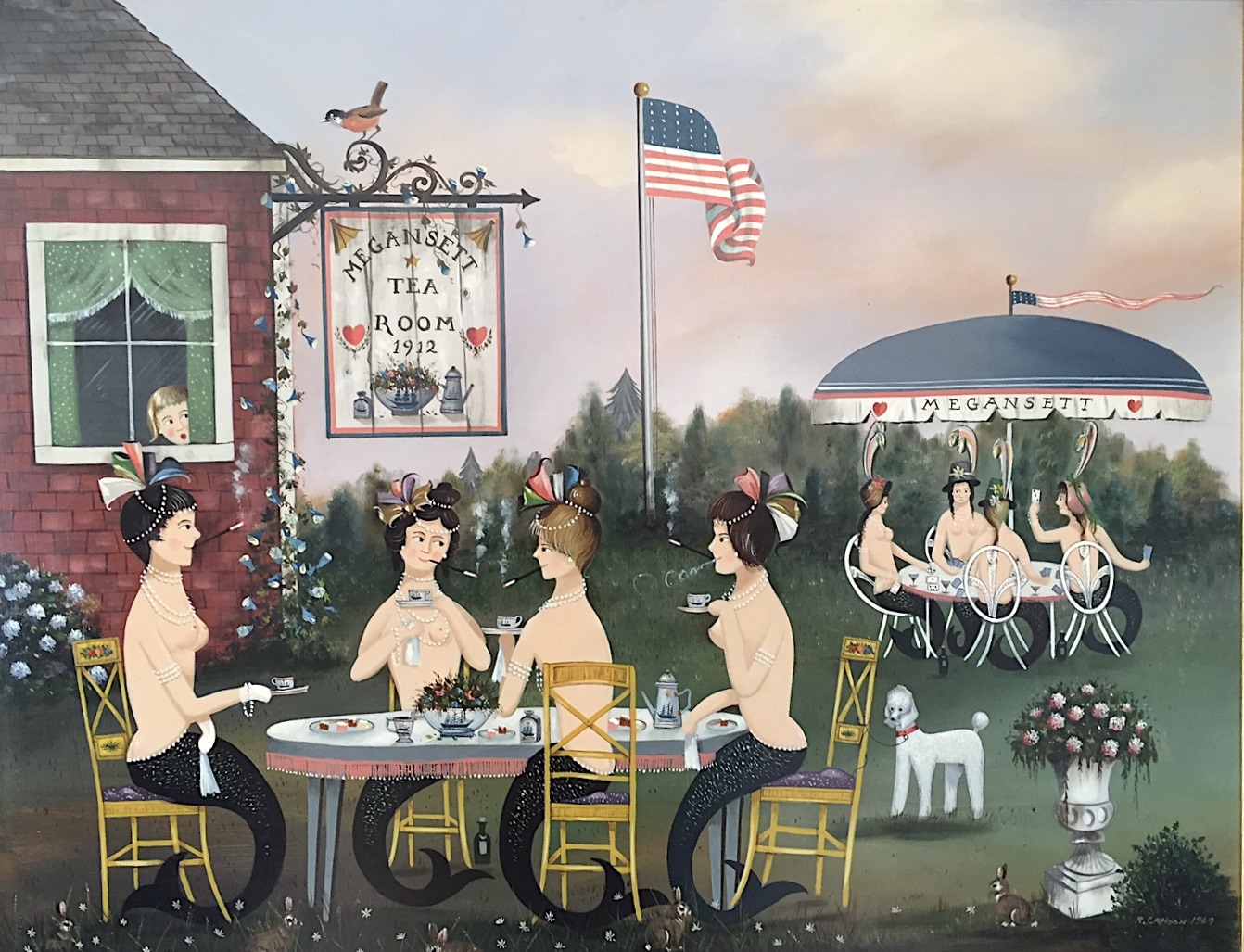MARIANI’S
Virtual
Gourmet
April 10, 2022
NEWSLETTER
IN THIS ISSUE
MODERN SPANISH GASTRONOMY:
AN INTERVIEW WITH GERRY DAWES
By John Mariani
NEW YORK CORNER
BLT STEAKHOUSE
By John Mariani
ANOTHER VERMEER
CHAPTER 14
By John Mariani
NOTES FROM THE WINE CELLAR
WINES FOR PASSOVER
BY GEOFF KALISH
❖❖❖
 Morante, author of
BASEBALL: THE NEW YORK GAME. Go
to: WVOX.com.
The episode will also be archived at: almostgolden.
Morante, author of
BASEBALL: THE NEW YORK GAME. Go
to: WVOX.com.
The episode will also be archived at: almostgolden.
AN INTERVIEW WITH GERRY DAWES
By John Mariani
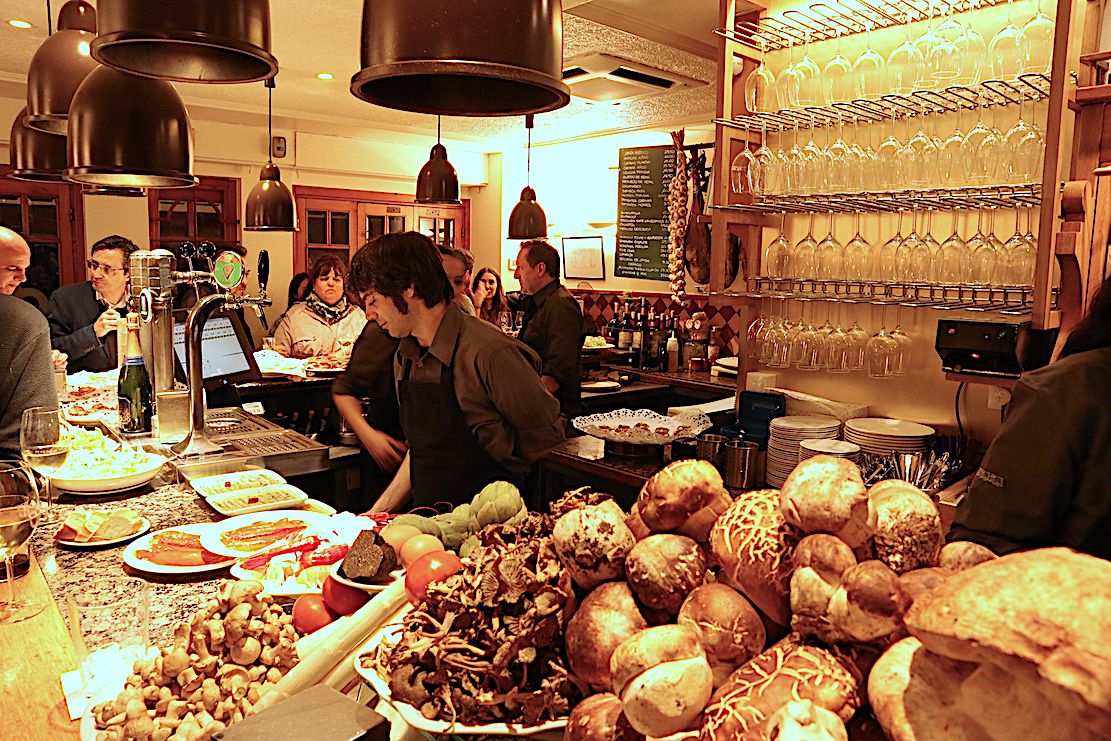
Granada Tapas Bar
 Gerry
Dawes, who is a contributor to this
newsletter, has just published a remarkable new
book, Sunset in a Glass: Adventures
of a Food and Wine Road Warrior in Spain,
a journey that is not just
the most comprehensive guide to Spanish food
culture but imbues it with the passion of
someone who fell in thrall with the country and
its people decades ago. He is that most intrepid
of reporters, asking every question an outsider
needs to ask to make ancient traditions clear. I
suspect he knows more about Spanish wines and
food than most Spaniards who have nothing close
to his intimacy with each and every region.
Gerry
Dawes, who is a contributor to this
newsletter, has just published a remarkable new
book, Sunset in a Glass: Adventures
of a Food and Wine Road Warrior in Spain,
a journey that is not just
the most comprehensive guide to Spanish food
culture but imbues it with the passion of
someone who fell in thrall with the country and
its people decades ago. He is that most intrepid
of reporters, asking every question an outsider
needs to ask to make ancient traditions clear. I
suspect he knows more about Spanish wines and
food than most Spaniards who have nothing close
to his intimacy with each and every region.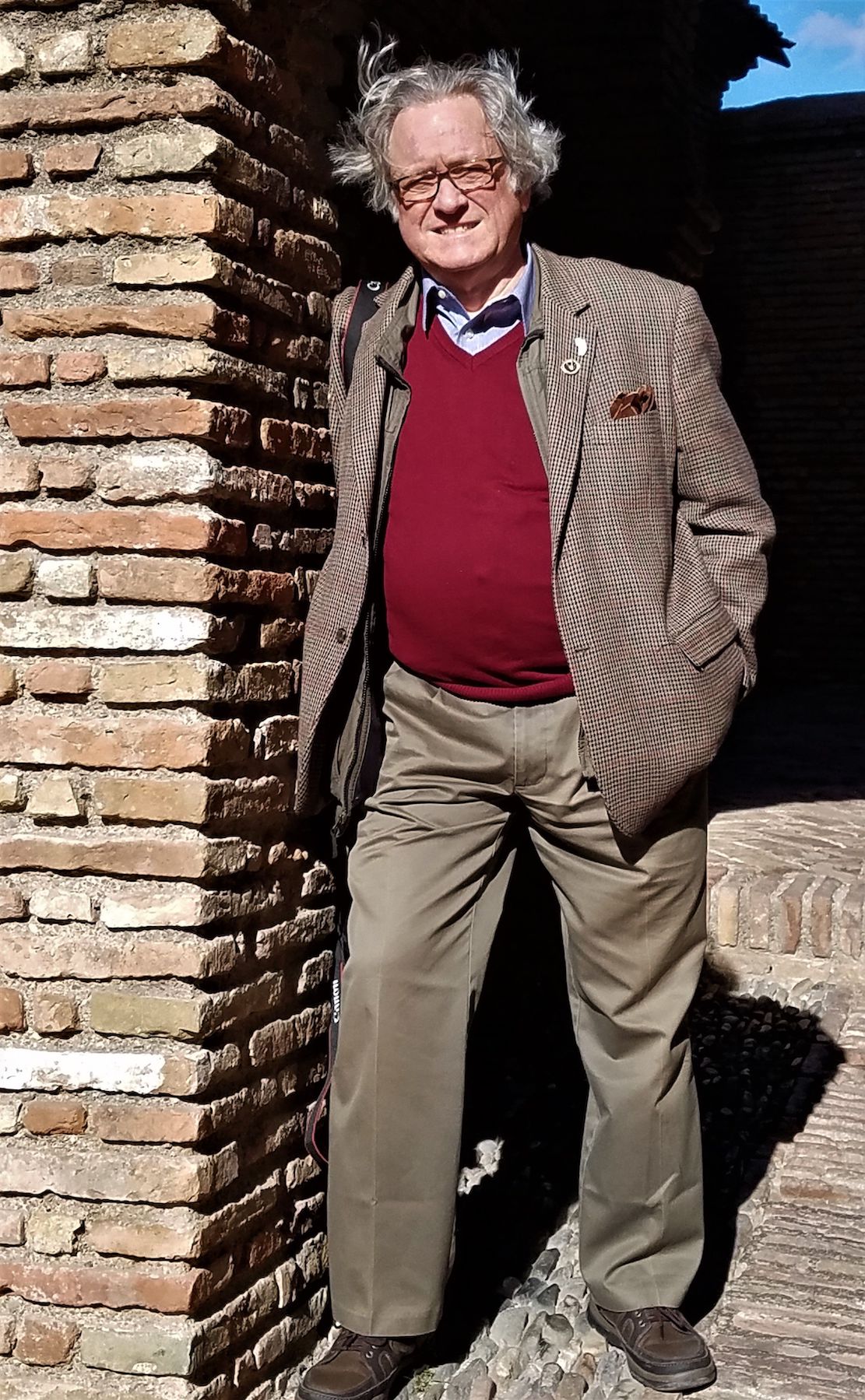
How did your fascination with Spain
begin? And
how did James Michener's book affect you?
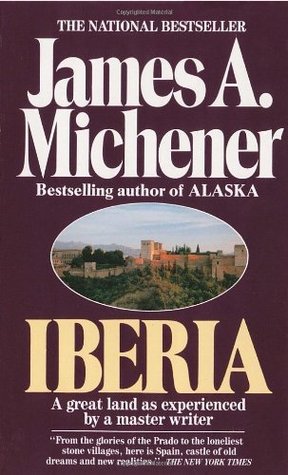 flight from McGwire Air Force Base in New Jersey,
banked near El Puerto de Santa María and I got my
first glimpse of Spain. Below, I saw whitewashed
buildings amid palm trees set in a sea of stubby
vines—now bare of leaves in mid-winter—surrounded by
stark white soil. As I would learn later, the Navy
base at Rota was near the sherry vineyards between
Jerez de la Frontera and Sanlúcar de Barrameda. As
the plane circled before landing, I also could not
help noticing circular enclosures, which I would
learn were bullrings, including the big one at El
Puerto de Santa María and a couple of smaller ones,
which I would one day find first-hand are used to
test young fighting cows for bravery. Spain was
already beginning to fascinate me and I had not even
touched the ground. In
1968, Michener’s Iberia was published. American
matador-artist John Fulton and his housemate, Robert
Vavra, who took the photographs for Iberia,
figured prominently in this best-selling non-fiction
book. I purchased a copy and learned that they lived
in Sevilla, just over an hour north of Rota. One
night in a legendary flamenco joint in Sevilla, I
met Fulton and he gave me his phone number and asked
me to visit him.
Iberia
would
become like a post-U. S. Navy yearbook to me.
flight from McGwire Air Force Base in New Jersey,
banked near El Puerto de Santa María and I got my
first glimpse of Spain. Below, I saw whitewashed
buildings amid palm trees set in a sea of stubby
vines—now bare of leaves in mid-winter—surrounded by
stark white soil. As I would learn later, the Navy
base at Rota was near the sherry vineyards between
Jerez de la Frontera and Sanlúcar de Barrameda. As
the plane circled before landing, I also could not
help noticing circular enclosures, which I would
learn were bullrings, including the big one at El
Puerto de Santa María and a couple of smaller ones,
which I would one day find first-hand are used to
test young fighting cows for bravery. Spain was
already beginning to fascinate me and I had not even
touched the ground. In
1968, Michener’s Iberia was published. American
matador-artist John Fulton and his housemate, Robert
Vavra, who took the photographs for Iberia,
figured prominently in this best-selling non-fiction
book. I purchased a copy and learned that they lived
in Sevilla, just over an hour north of Rota. One
night in a legendary flamenco joint in Sevilla, I
met Fulton and he gave me his phone number and asked
me to visit him.
Iberia
would
become like a post-U. S. Navy yearbook to me. 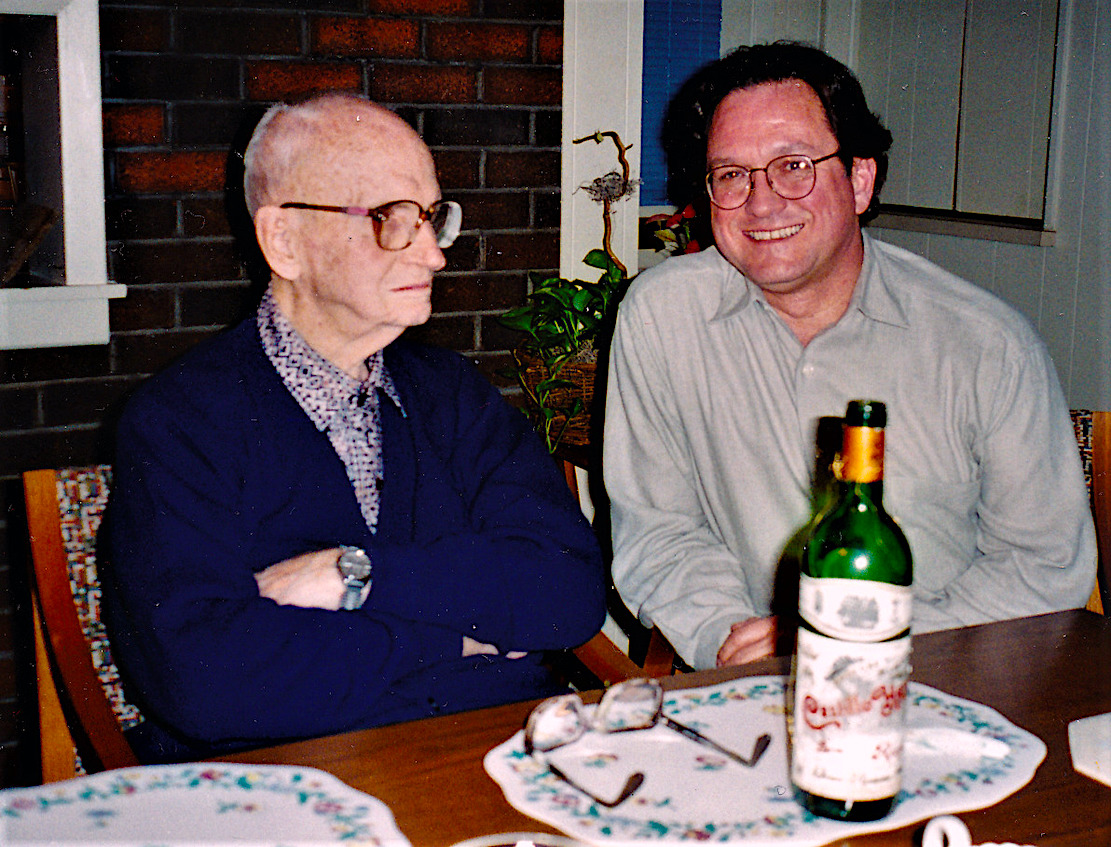 Eventually,
20 people whom Michener (right) wrote about
in Iberia signed my copy. Fulton and Vavra had also
known Ernest Hemingway and many of his entourage. By
the time I met them because of Iberia
they had achieved legendary status among
hispanophiles.
Knowing them had a profound impact on my life
and selling Fulton’s paintings and Vavra’s books
allowed me to stay in Spain after I was discharged
from the Navy.
Eventually,
20 people whom Michener (right) wrote about
in Iberia signed my copy. Fulton and Vavra had also
known Ernest Hemingway and many of his entourage. By
the time I met them because of Iberia
they had achieved legendary status among
hispanophiles.
Knowing them had a profound impact on my life
and selling Fulton’s paintings and Vavra’s books
allowed me to stay in Spain after I was discharged
from the Navy. Since I never got to use Russian,
except for military terminology, after I left the
Navy, I began to lose it as Spanish took over. I began
speaking Spanish to get along in southern Spain,
taking trains, ordering food and drinks and
gradually moved into pidgin Spanish. Then I took a
class on the base and began to visualize the words
I was hearing.
At the University of Sevilla a couple of my
classes were in Spanish and as I acquired more and
more Spanish friends, such as my friend Juan
Alonso, who became the best man at my wedding, I
became more and more fluent.
How did you earn a living in Spain
in the beginning?
In 1970, the first year I lived
in Sevilla, to make ends meet, I began to sell the
artwork of John Fulton. I also did some writing
and photography and contributed pieces to the
English-language magazine Guidepost
in Madrid. And I got $250 per month from the G. I.
Bill to attend classes through an American program
at the University of Sevilla.
What changes were there in Spanish
gastronomy after the death of Franco?
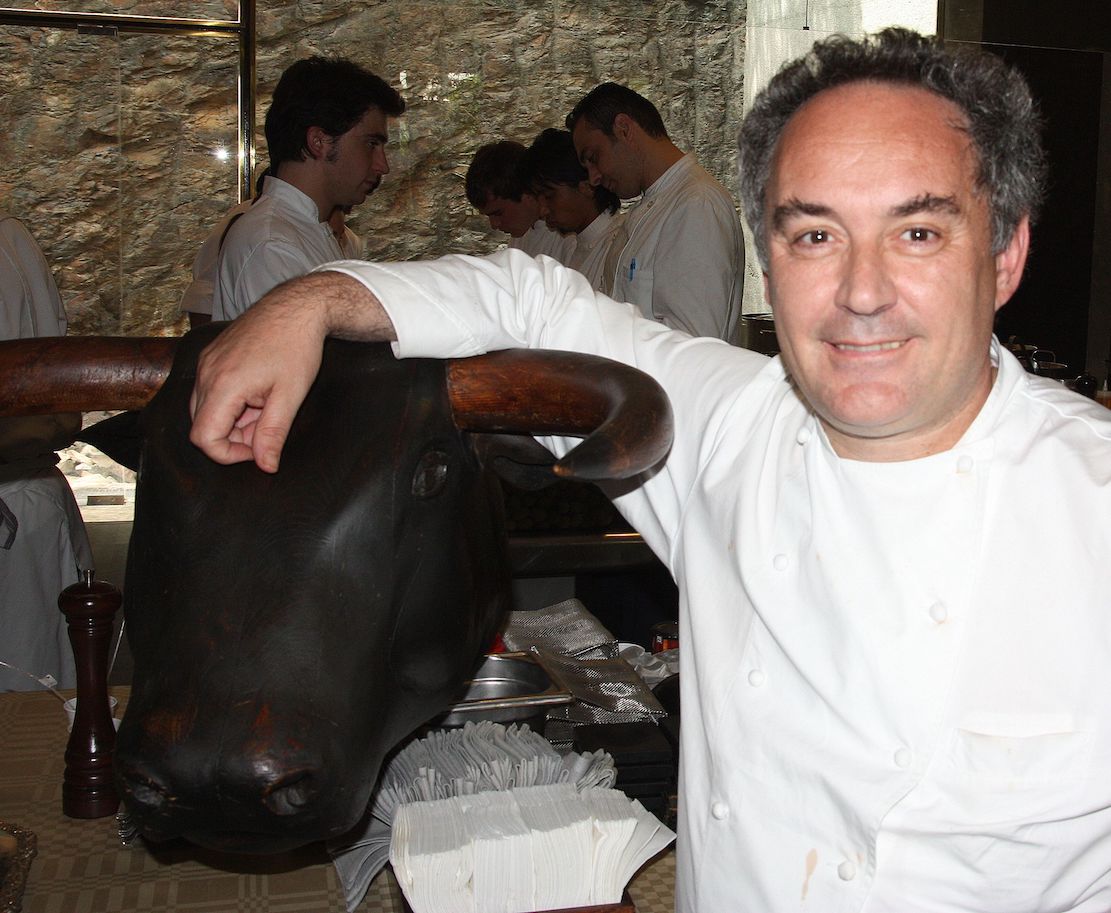
First off, Basque chefs such as
Juan Mari Arzak began using French nouvelle
cuisine techniques with nueva cocina
vasca, which later morphed into a unique
Spanish cocina
de vanguardia, avant-garde, Catalan Ferran
Adrià-influenced, Michelin star-driven cuisine (right). Also,
smaller family and small producer winemakers began
to emerge, many of them growers who pulled out of
the cooperatives that were promoted by the Franco
regime. During
Franco, there were almost no artisan cheese
makers, because the regime dictated that almost
all cheeses be made in cooperatives. Now
there are hundreds of terrific Spanish artisan
cheeses.
Describe the best way to go on a
progressive tapas
evening.
Well, with me. Faulting
that, stake out an easily walkable area in a city
like Madrid, Sevilla or San Sebastián, for
instance.
In Madrid, you can go to Cava Baja and the
area around the Plaza Mayor, but the most de moda,
sexy tapas
bars are beyond Retiro Park in the area around the
Ibiza Metro station.
In Sevilla, there are routes in the Barrio
de Santa Cruz, the Old Jewish Quarter, and in
Triana and many other areas of this lovely
tapas-oriented city.
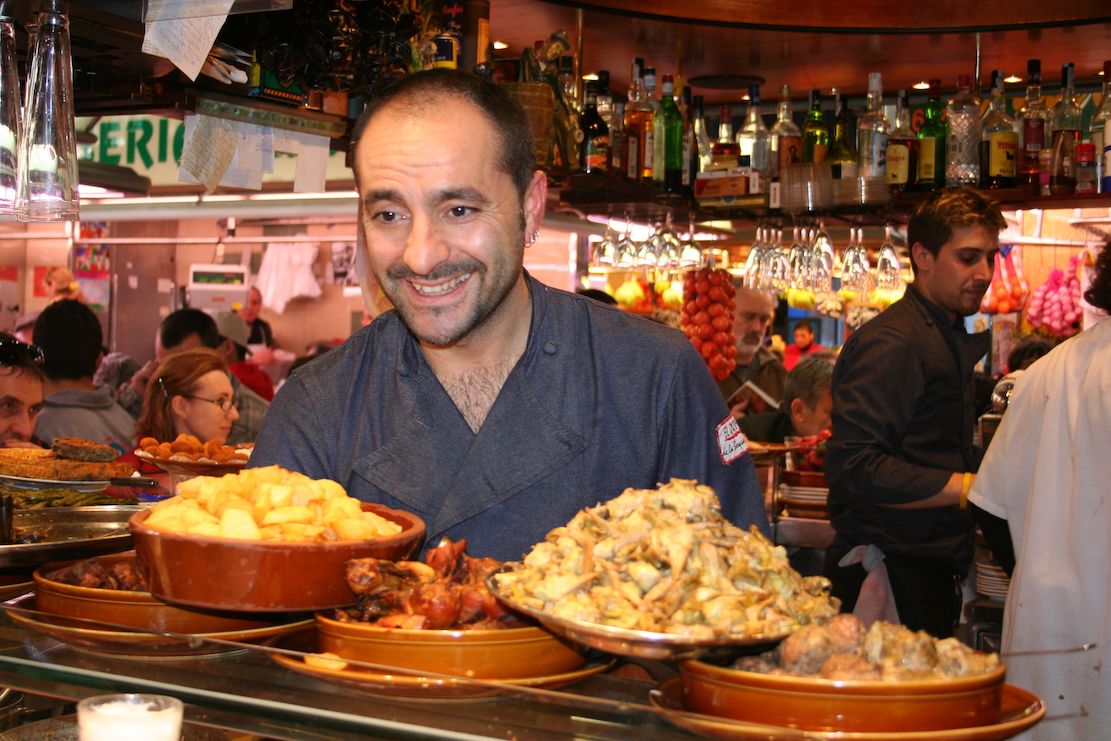 In San Sebastián, the Old Quarter is still
one of the best places for pintxos,
(tapas)
bars. Check
out places that seem to be packed with locals, be
patient, watch what some of them are ordering and
ask to try a couple of dishes, which will likely
be single small oval china plates for one person. Larger
plates of that same tapas are
called raciones
(sharing portions) and priced accordingly. If
you’re a tourist, you may be fine after two or
three of these spots, where you have a beer or a
glass of wine at each stop. I
used to have a route in Sevilla that started in
the Barrio de Santa Cruz, where I lived, and ended
in Triana. There
were eleven bars on my trail. It
helped that I was young and had an ample capacity
for drink. The
exercise from walking from bar to bar, a kilometer
or two across the city, helped.
In San Sebastián, the Old Quarter is still
one of the best places for pintxos,
(tapas)
bars. Check
out places that seem to be packed with locals, be
patient, watch what some of them are ordering and
ask to try a couple of dishes, which will likely
be single small oval china plates for one person. Larger
plates of that same tapas are
called raciones
(sharing portions) and priced accordingly. If
you’re a tourist, you may be fine after two or
three of these spots, where you have a beer or a
glass of wine at each stop. I
used to have a route in Sevilla that started in
the Barrio de Santa Cruz, where I lived, and ended
in Triana. There
were eleven bars on my trail. It
helped that I was young and had an ample capacity
for drink. The
exercise from walking from bar to bar, a kilometer
or two across the city, helped.
When
did
Spanish wines enter the modern era and on the
global market as a real force?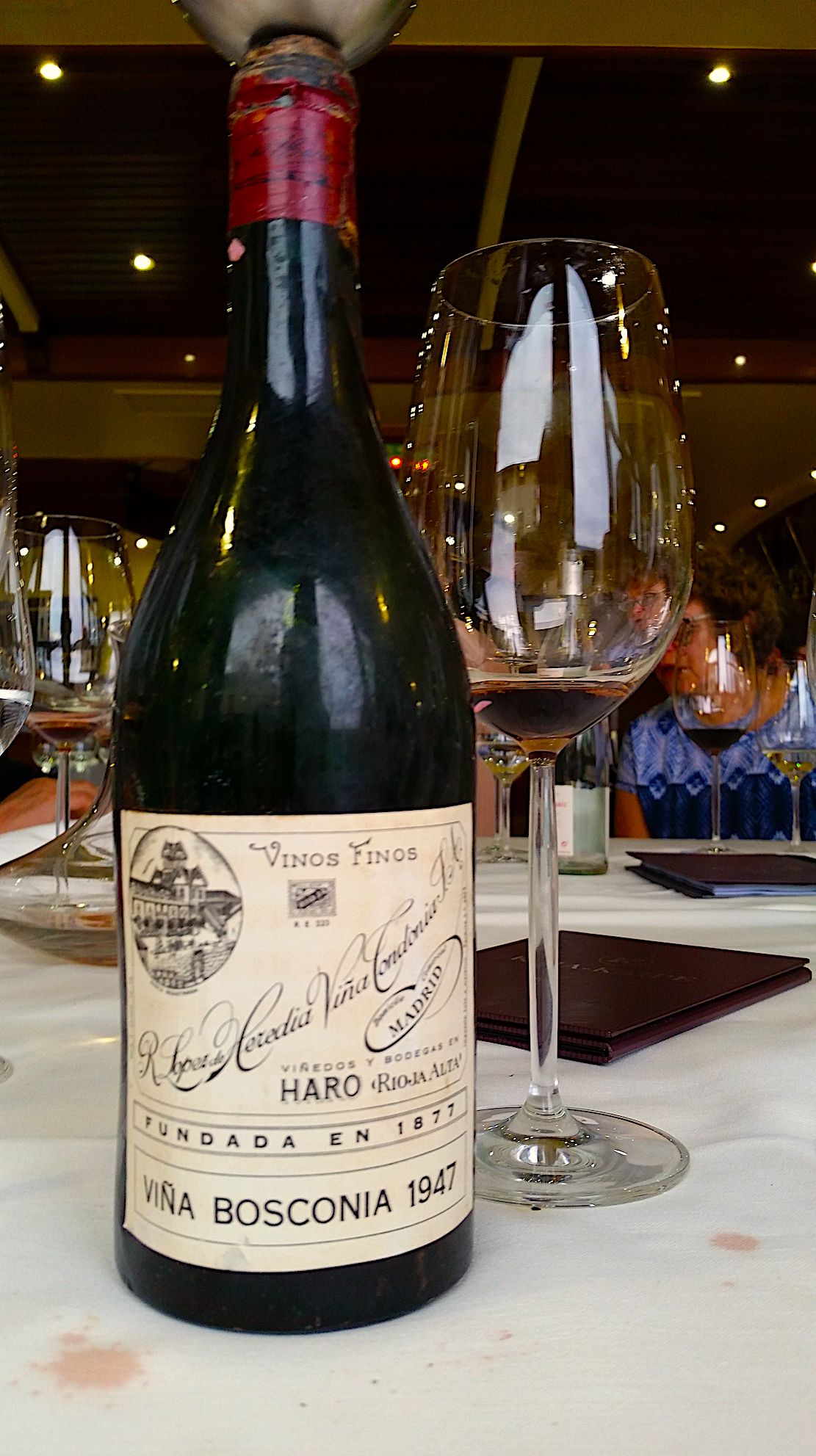
A group of Madrid wine writers
began to emerge and, as with so much in the
post-Franco era, the measure was that everything
new had to be good and everything traditional to
be re-evaluated and, often, fell into disfavor as
part of the old regime. For
instance, those great old Rioja Reservas and Gran
Reservas began to lose ground to new oak-laced,
high alcohol fruit bombs and city
apartment-dwelling wine writers who had visited
far fewer Spanish wineries than I had began to
make Robert Parkerista pronouncements about what
good wine should taste like. They
were wrong, but they set the palate for what to me
are many unpalatable wines, though highly rated
wines, for a whole generation.
You have crusaded for a long time
against high alcohol wines. Are there many Spanish
producers who are deliberately making such wines?
Of course, Spain has always been
a hot country, but the best wines came then, and
still do, from the Atlantic-influenced north.
Rioja, for instance, had beautiful long-lived Gran
Reservas that were 12%-12.5% alcohol. Now many
Rioja wines, and most of Ribera del Duero red, top
14% and even reach 15%. The
difference between 12.5% and 15% is 20% more
alcohol by volume in a bottle, meaning that you
are getting a liter’s worth of alcohol, instead of
the amount in a 12.5% 750ml. bottle. I do not
drink wine for the alcohol. If I want to get on a
piss, Tequila is faster—and cheaper.
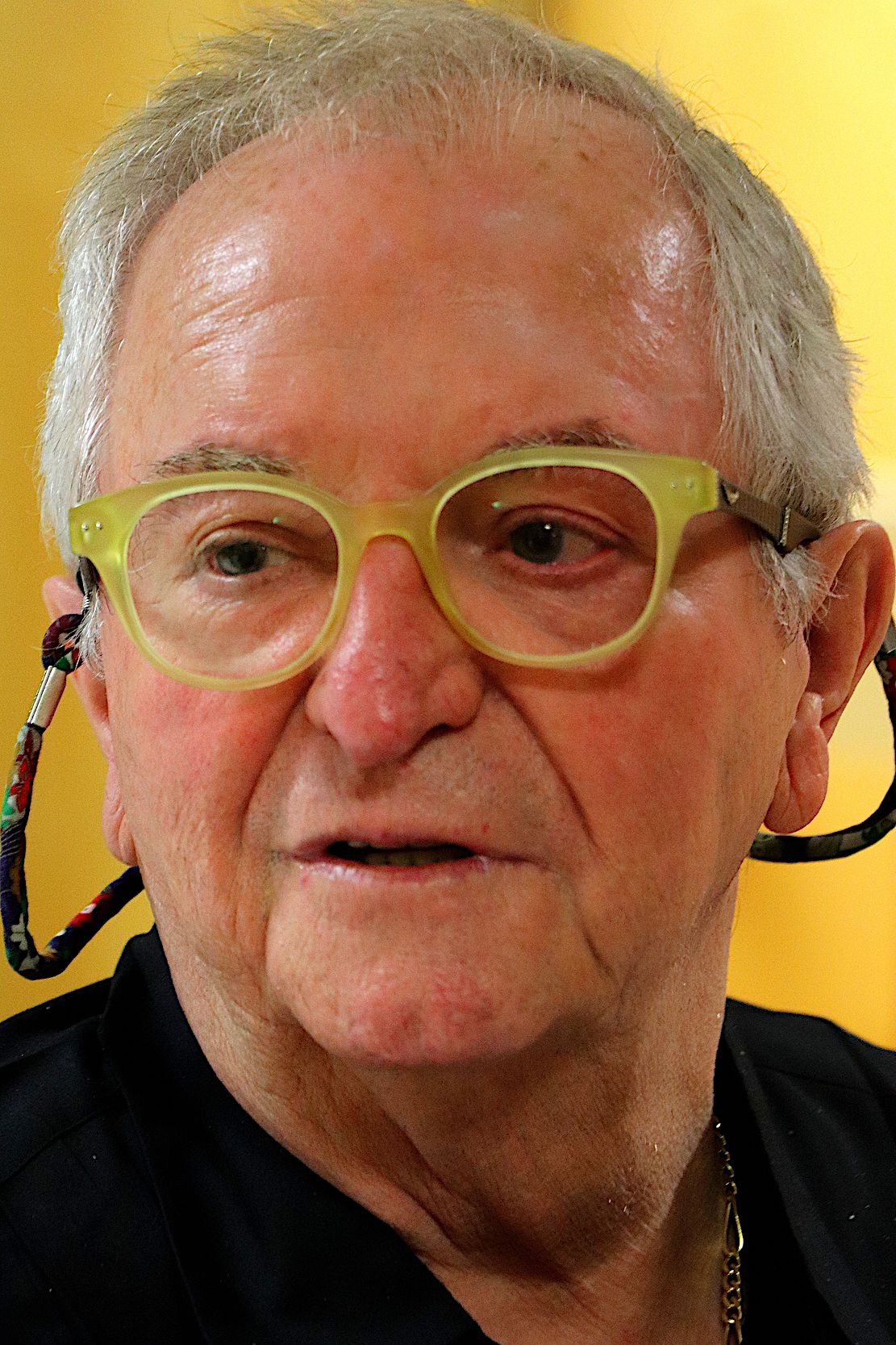
What are the centers of the most
interesting gastronomy in Spain right now?
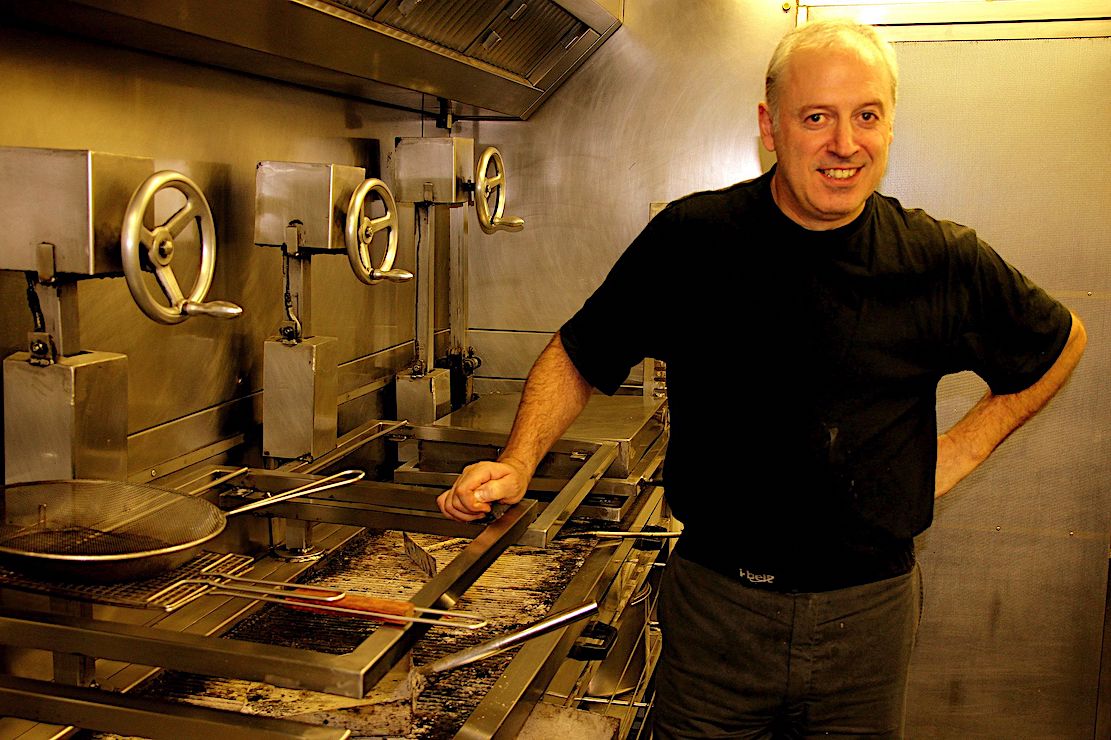 In Valencia, Emiliano and his son Alejandro’s
Casa Montaña (founded in 1835) is one of the best
product-driven tapas restaurants
anywhere. This region also has such
pilgrimage-worthy restaurants in inland Alicante
province (where L’Escaleta is located) as chef Mari Carmen
Vélez’s modernist cuisine and has an exceptional
product-driven tapas menu as well.The legendary
desserts chef and chocolatier Paco Torreblanca also
has his cooking school and plants in neighboring
Monóver (where the mythical Poveda Fondillón dessert
wine is made).
And a few kilometers more inland is one of
the most remarkable family-run traditional cuisine
restaurants in Spain, Casa Eliás in Xinorlet, which
specializes in arroces en
paella with wild rabbit and mountain snails
cooked over grape vine cuttings. This
entire region offers some of the world’s greatest
and most delicious rice dishes, not all of them
paellas, which is the name of the pan.
In Valencia, Emiliano and his son Alejandro’s
Casa Montaña (founded in 1835) is one of the best
product-driven tapas restaurants
anywhere. This region also has such
pilgrimage-worthy restaurants in inland Alicante
province (where L’Escaleta is located) as chef Mari Carmen
Vélez’s modernist cuisine and has an exceptional
product-driven tapas menu as well.The legendary
desserts chef and chocolatier Paco Torreblanca also
has his cooking school and plants in neighboring
Monóver (where the mythical Poveda Fondillón dessert
wine is made).
And a few kilometers more inland is one of
the most remarkable family-run traditional cuisine
restaurants in Spain, Casa Eliás in Xinorlet, which
specializes in arroces en
paella with wild rabbit and mountain snails
cooked over grape vine cuttings. This
entire region offers some of the world’s greatest
and most delicious rice dishes, not all of them
paellas, which is the name of the pan. What do you think are the three
or five best restaurants in Spain at the moment?
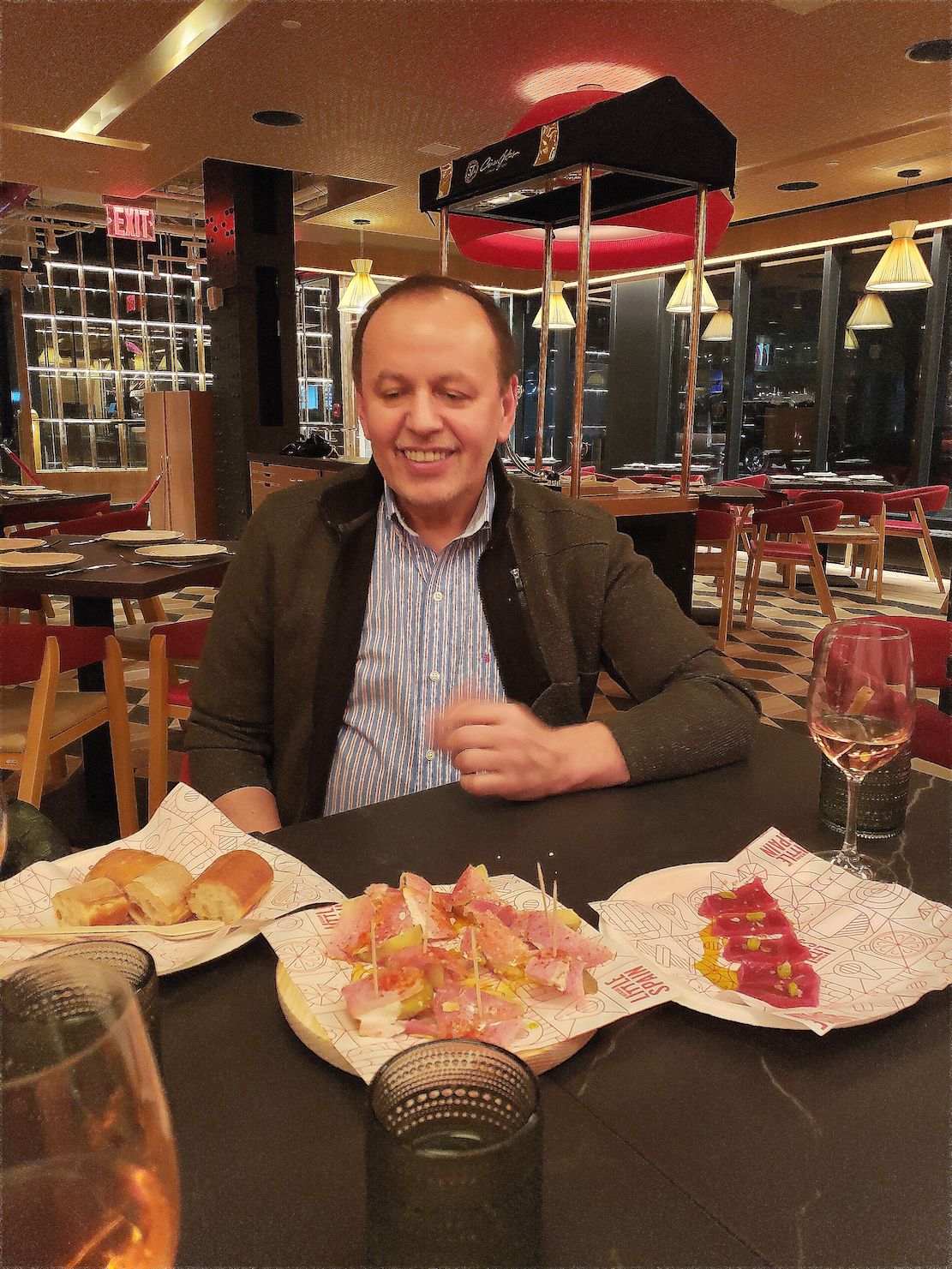 Why have
you been so critical of the Michelin
Guide’s
ratings of restaurants in Spain?
Why have
you been so critical of the Michelin
Guide’s
ratings of restaurants in Spain?
It is a tire company, using a
paper guidebook to sell tires. Why do
you think Japan, with so many car manufacturers
suddenly had so many Michelin
rosettes bestowed on its restaurants? All
those cars need tires. Michelin
bestows some 1,700 rosettes on French restaurants,
while Spain is given a mere 200+. These
two countries are in competition for gastro
tourism Euros.
Until it is awarded at least a thousand
more stars, which its restaurants deserve, Spain
should boycott Michelin tires to see which
Michelin wants to sell most, rubber or paper,
their tires or their highly biased paper Guide
Michelin.
What are the best Spanish
restaurants in the United States?
❖❖❖
BLT STEAKHOUSE
106 E 57th Street
212-752-7470
By John Mariani
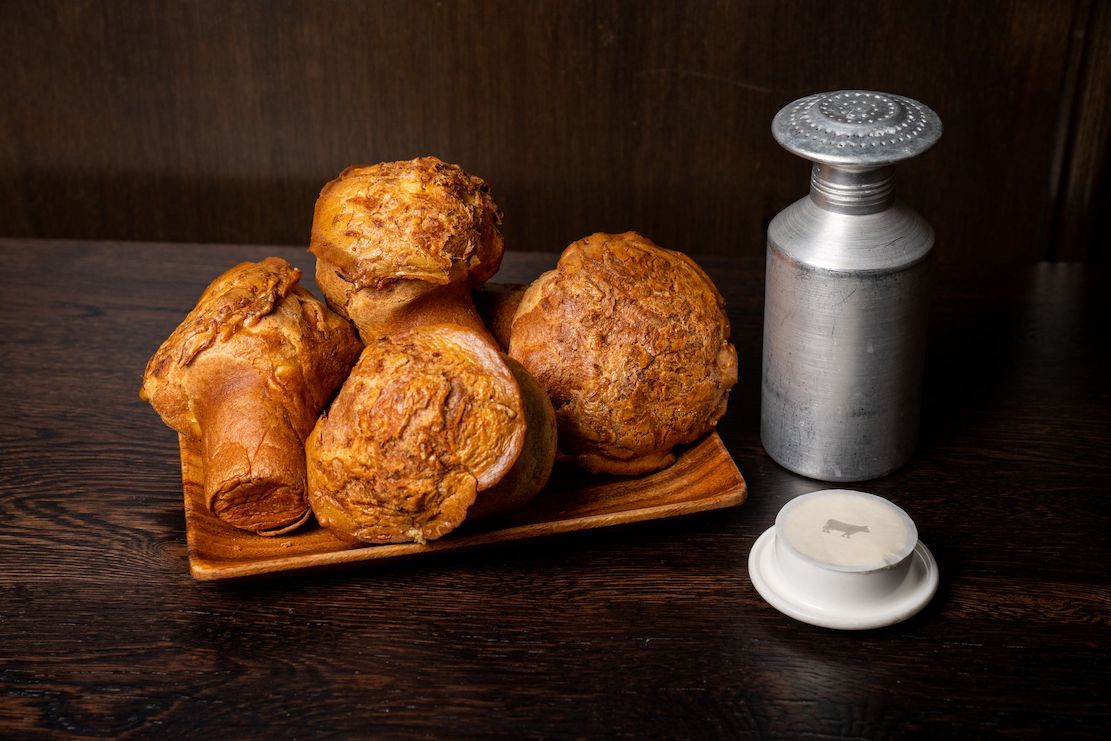
Effecting a distinctive signature
in New York’s fiercely competitive
steakhouse industry, wherein 90% of all
menus are the same, depends on various
factors: history, as in Peter Luger, opened
in 1887, or Keens (1885); extravagance, as
at Salt Bae; a fan base for a national
chain, like Ruth’s Chris or Morton’s; highly
personalized service, as at Empire and Royal
35; or, in the case of BLT Steak, the
popover.
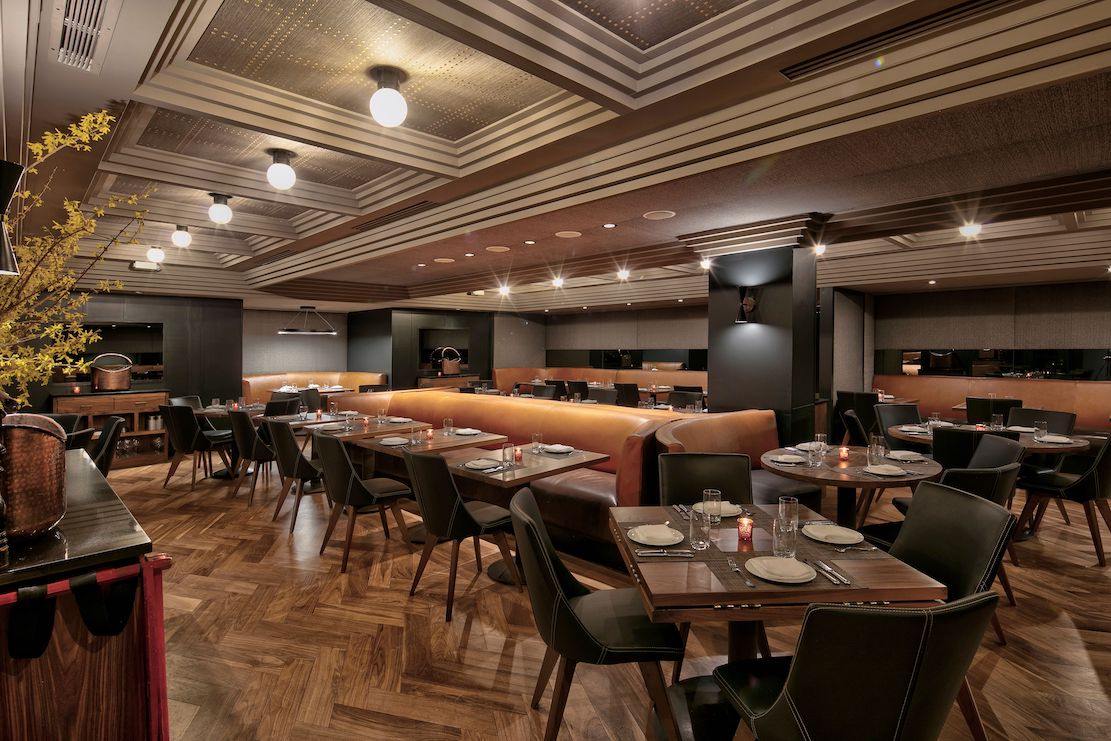 Created at
the opening of its first outpost on East 57th
Street by French chef-partner Laurent
Tourondel, the popover was the size of a
softball, crisp as a Parisian croissant and
riddled with Cheddar cheese. And it was
brought steamy hot to the table—free. The
recipe has been printed in various media many
times, but it’s not easy to make at home (it
takes more than an hour). It became one item
that gave many people reason to go to BLT,
instead of any number of other nearby
steakhouses serving sliced bread.
Created at
the opening of its first outpost on East 57th
Street by French chef-partner Laurent
Tourondel, the popover was the size of a
softball, crisp as a Parisian croissant and
riddled with Cheddar cheese. And it was
brought steamy hot to the table—free. The
recipe has been printed in various media many
times, but it’s not easy to make at home (it
takes more than an hour). It became one item
that gave many people reason to go to BLT,
instead of any number of other nearby
steakhouses serving sliced bread.
There is, of course, a whole lot more
than the gigantic popover that attracts
regulars to BLT, not least its comfortable,
modern design with buttery, caramel-colored
leather banquettes and 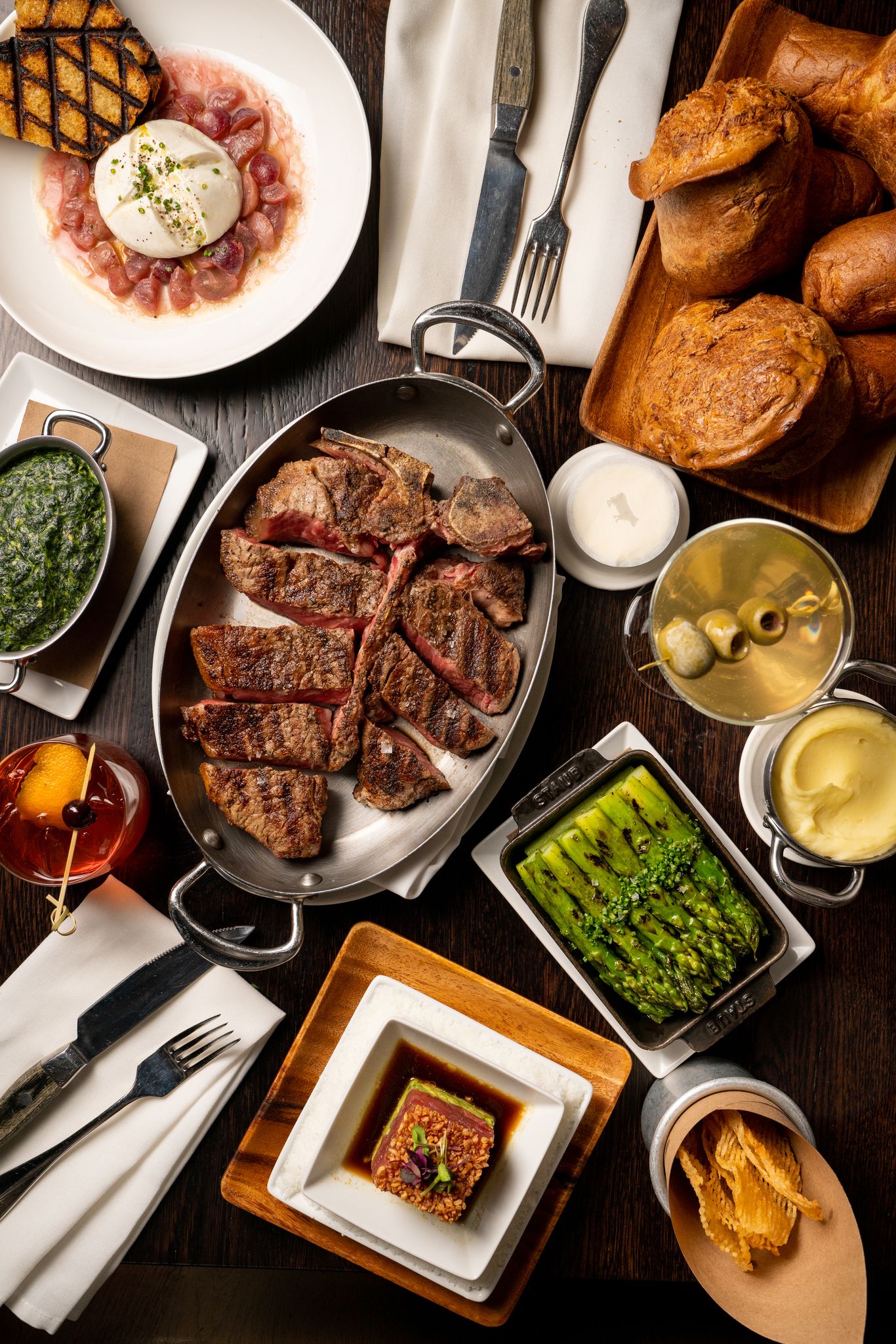 soft,
flattering lighting, ebony tabletops and a
gorgeous bar up front, even sprays of flowers.
Those looking for the brash macho attitude of
Peter Luger or Smith & Wollensky won’t
find it at BLT, where the greeting and care
are cordial and attentive.
soft,
flattering lighting, ebony tabletops and a
gorgeous bar up front, even sprays of flowers.
Those looking for the brash macho attitude of
Peter Luger or Smith & Wollensky won’t
find it at BLT, where the greeting and care
are cordial and attentive.
Several years ago Tourondel and partner
Jimmy Haber parted ways, with Haber retaining
ownership of the brand. But, eventually,
Tourondel won back the right to use the BLT
name outside of New York, while Haber runs BLT
Steak in New York, Los Angeles, Washington,
and other international units, as well as
three BLT Prime restaurants. It should be
noted that BLT company filed for bankruptcy
protection last month but Habr says none of
the units asked for debtor protection so they
all are operating as usual.
Not much has changed since
my last visit a while ago, except that
everything has been freshened. I recall the
place used to be a tinderbox of boisterous
noise, which now seems a bit tamped down
(which may have to do with BLT re-building its
clientele from the height of the pandemic,
when office buildings were emptied of
expense-account rich employees).
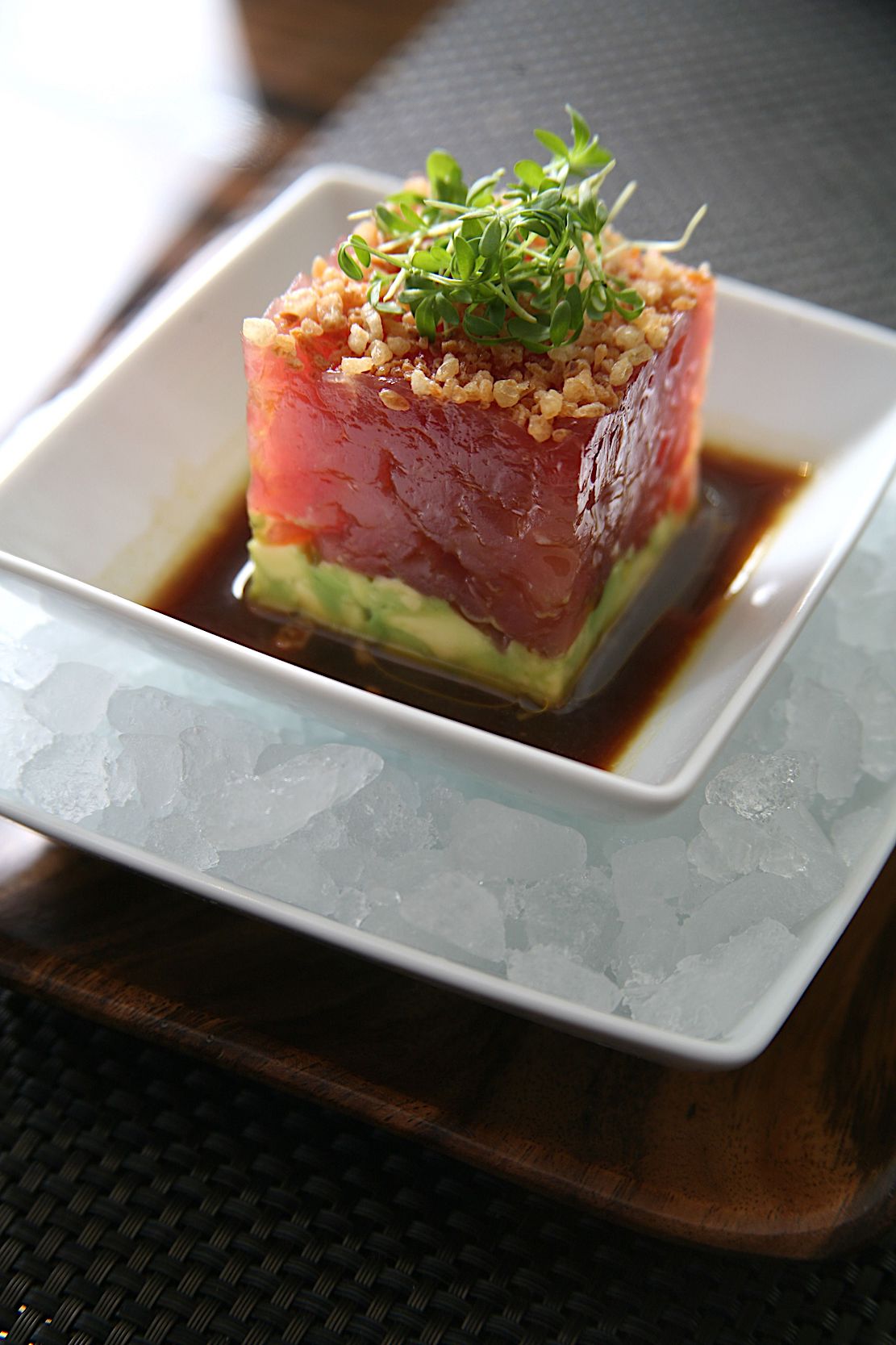 The
menu is one big broadsheet, with seven steak
cuts and an equal number of other main
courses. There are also two “food & wine”
combinations: a NY strip with one side and a
glass of wine ($65), Scottish salmon with the
same ($50), and specials each night; at the
moment there is also a “pop-up” menu of Thai
items, including a very good lettuce wrap.
The
menu is one big broadsheet, with seven steak
cuts and an equal number of other main
courses. There are also two “food & wine”
combinations: a NY strip with one side and a
glass of wine ($65), Scottish salmon with the
same ($50), and specials each night; at the
moment there is also a “pop-up” menu of Thai
items, including a very good lettuce wrap.
As noted, there isn’t much difference
on steakhouse menus, which is just fine with
patrons, and BLT adds no pastas, but it sure
would be nice to have a couple of soups. There
is a “raw & chilled” section that includes
a first rate tuna tartare (left) with
avocado and soy lime dressing ($24), which comes,
like everything here, in an enormous portion.
Even more so is a lobster Cobb salad chopped
with avocado, aged cheddar, soft egg and
pancetta ham and an abundance of lobster meat
($32).
There is the usual thick-cut bacon,
here given a treatment of herbs and Sherry
($21), and a crab cake with radish, fennel,
dill vinaigrette, dill mayo and cilantro
($27). I found the fried calamari with
julienned vegetables ($21) had a lemon-chive
aïoli much more delectable than the usual
cocktail sauce elsewhere.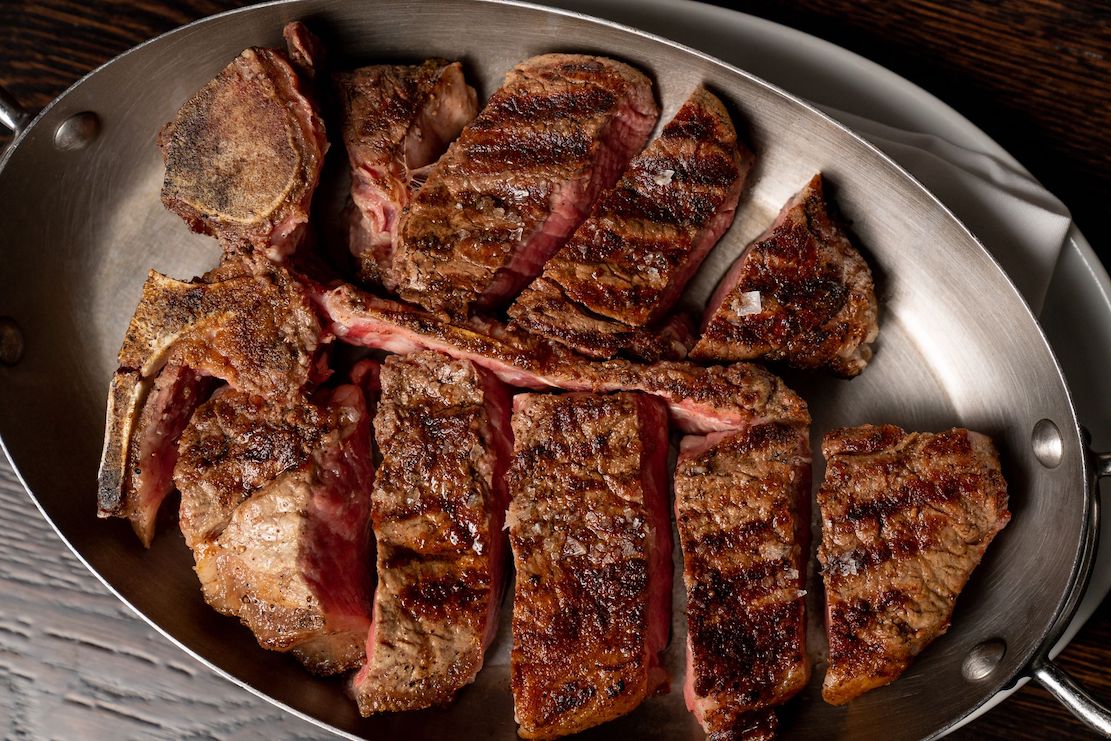
Getting to the steaks, the 22-ounce
cowboy bone-in ribeye at $68 is an excellent
alternative to the 36-ounce porterhouse at
$130. I found a New York strip at 14 ounces
($58) lacked the tangy, mineral flavor I look
for in great beef, but then, as the menu
reads, fairly enough, not all the beef served
is USDA prime that can provide some of that
flavor.
I was hungering for the sautéed Dover
sole with caper soy brown butter ($62), and
got a nice plump version. I had, however,
asked for it to be served on the bone
(assuring it stays hot), but it came already
filleted in the kitchen. Nicely grilled lamb
chops, sadly not American but from New
Zealand,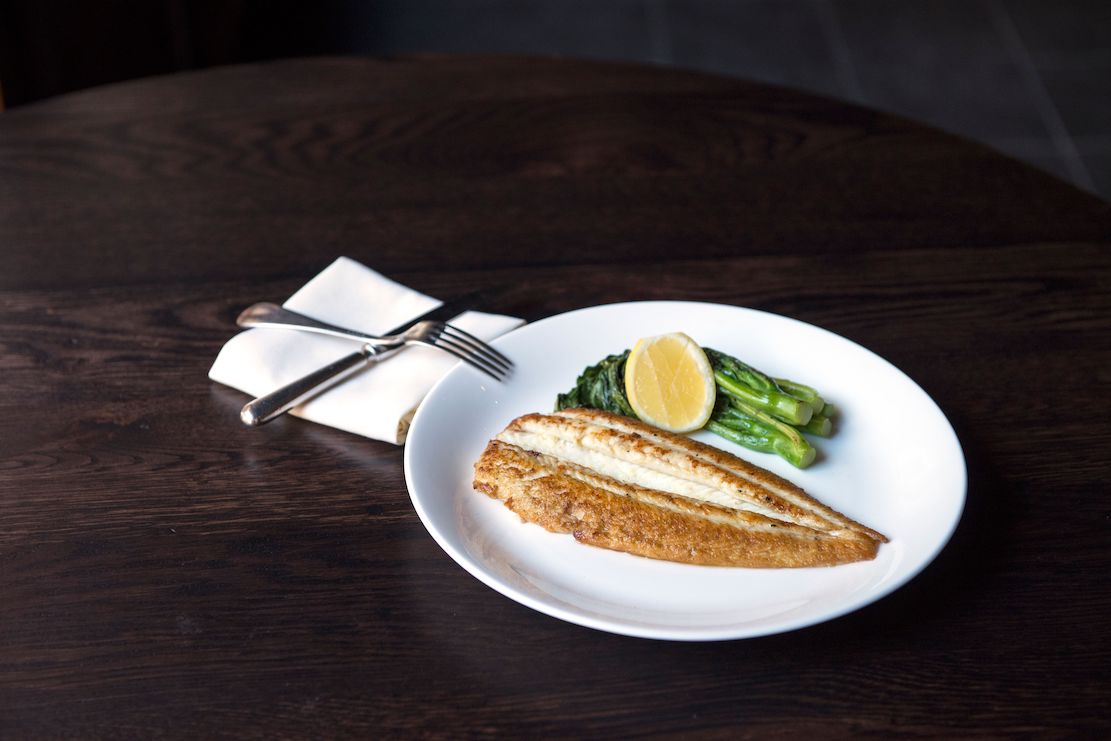 are
sided with a black olive caramel and spiced
yogurt ($58). You will certainly want to order
some of the sides, especially the decadent
truffled mashed potatoes, the rich mac &
cheese and the perfect french fries (all $14).
are
sided with a black olive caramel and spiced
yogurt ($58). You will certainly want to order
some of the sides, especially the decadent
truffled mashed potatoes, the rich mac &
cheese and the perfect french fries (all $14).
You really should indulge in one or two
desserts, especially the crêpe soufflé with
passion fruit sauce ($TK) that has always been
a staple on the menu.
BLT’s wine cellar is very well stocked
and prices are competitive, but it is piled
high with so many bottlings over $100 that
it’s tough to find much under than figure, and
the first three choices I asked for they did
not have in stock.
As I said at the beginning, people have
their favorite steakhouses for various
reasons, but foremost should be consistency
and cordiality, which BLT has in spades, since
they’ve been at it for a long time now. Not to
mention those irresistible popovers.
❖❖❖
ANOTHER VERMEER
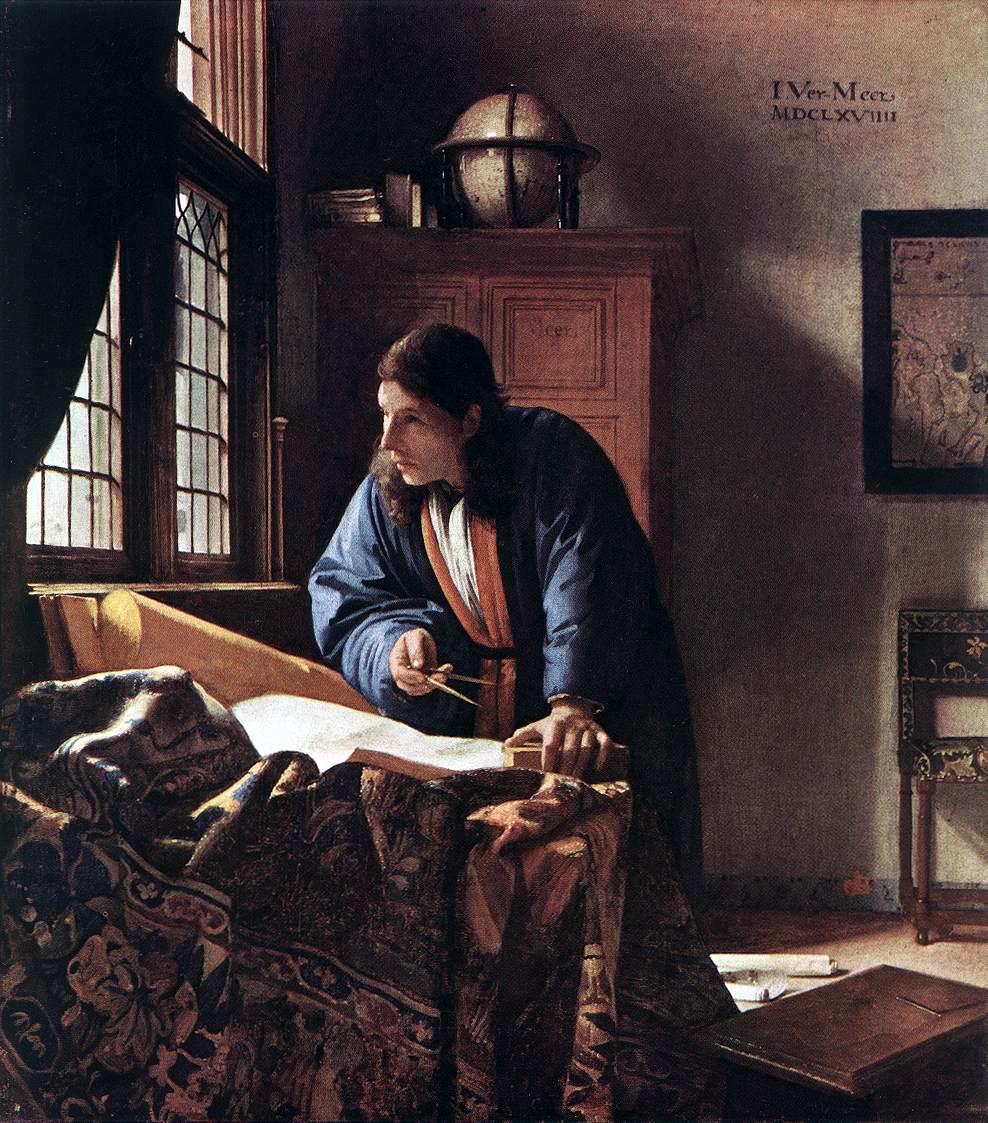
By John Mariani

As
it had been the year before when David met Katie
at
Fordham University in the Bronx, the day was
brilliant, with a dazzling sun
tussling with silver-rimmed clouds while swirls
of autumn leaves blew in the
wind gusts on the Gothic-style Rose Hill campus.
David had never made it through college,
while Katie was a
distinguished student among a legacy of famous
Fordham graduates that included
authors Don DeLillo and Paddy Chayefsky, actors
Alan Alda and Denzel
Washington, Vice Presidential candidate Geraldine
Ferraro and Coach Vince
Lombardi. When
Katie attended there was
still a sizeable complement of Jesuit priests,
whose order founded the school
in 1841, later evolving into a university.
They had been very happy years for Katie in
college, and she
was about to visit one of her favorite professors,
Dr. Karl Mundt, who had
escaped Nazi Germany as a teenager and became very
well known for his work on
modern European history.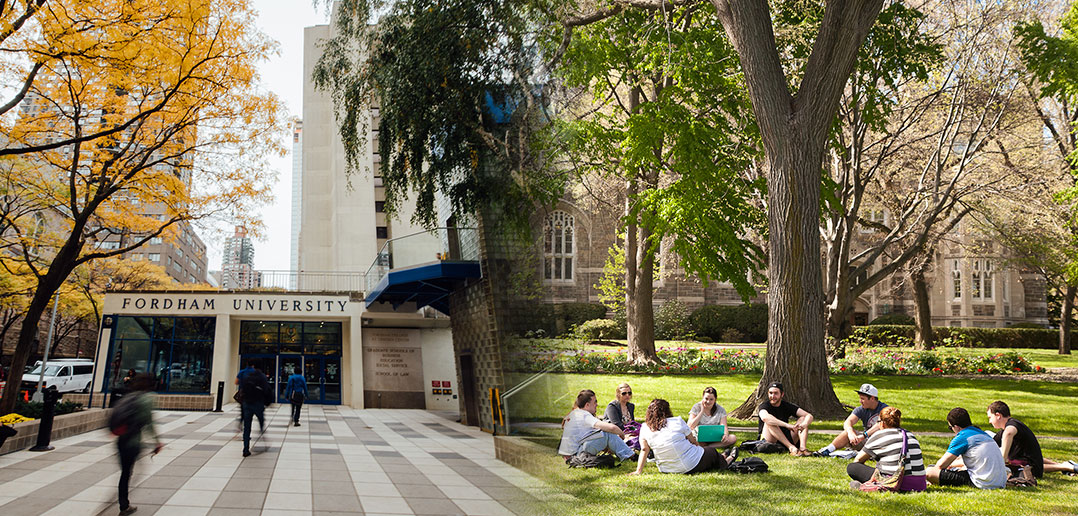
Prof. Mundt welcomed Katie, always one of
his favorite
students, who he so wished would have gone on to
grad school to become a
teacher, and he remembered David from his visit
the year before.
Prof. Mundt’s English was impeccable, with
only the slightest trace of a German accent, and
his bearing was patrician, if
a little stooped over now. Katie had never seen
him without a jacket and tie.
“So, come in, come in,” he said, “Excuse
the mess. It
seems the grad school theses get thicker
all the time,” then he winked, “and more boring.”
Prof. Mundt shared his office with a
professor of Asian
history, whom he introduced as Helen Liu, a woman
not much older than Katie,
with short black hair, glasses and wearing a deep
blue pants suit.
“Katie was one of my best students,” Prof.
Mundt told Prof.
Liu. “I
always told her she should get
her doctorate and teach.”
He asked Katie how her family was—her
father was a lawyer, her mother a teacher—then
said, “So, you have come not
just to see your old professor but to solve some
mystery for you about Jan
Vermeer?”
“No real mystery,” said Katie, “but I need
some historical
insight into some details about this painting of
Vermeer that’s coming up for
auction.”
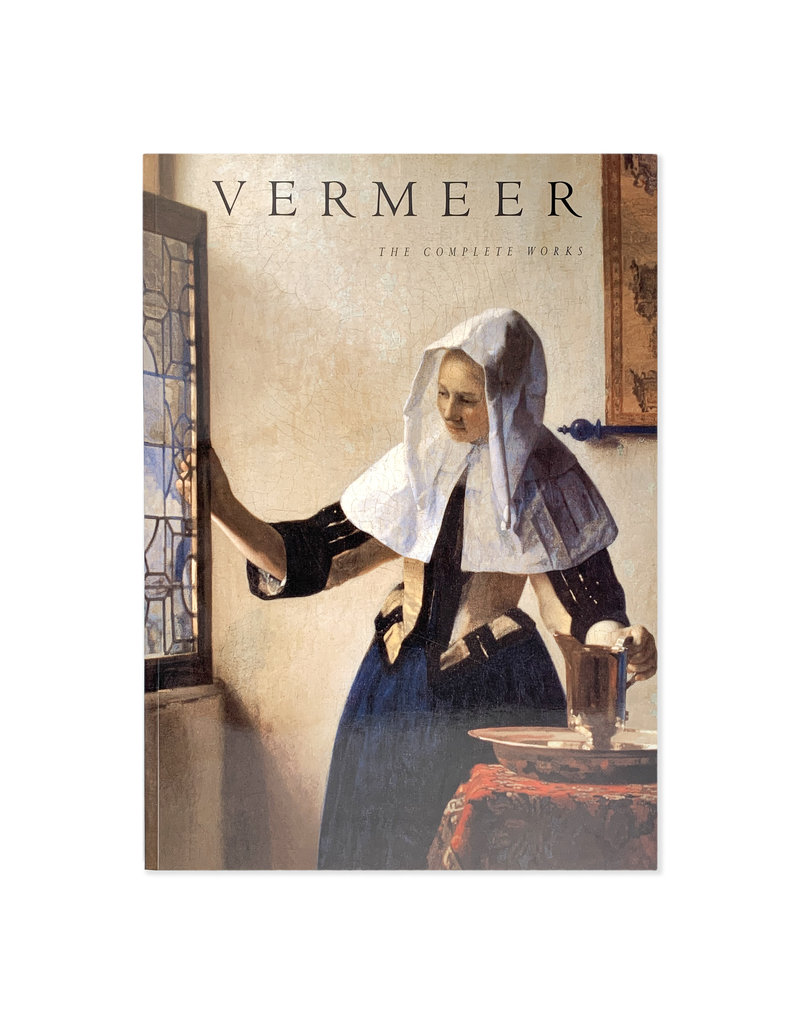 “Ah,
yes, I read about this in the papers a few weeks
ago,”
he said. “So I took the liberty of calling a very
fine expert on Renaissance
art—Professor Elizabeth Horner—to join us in the
conference room,” then,
turning to Prof. Liu, asked, “And would you like
to join us, Helen?”
“Ah,
yes, I read about this in the papers a few weeks
ago,”
he said. “So I took the liberty of calling a very
fine expert on Renaissance
art—Professor Elizabeth Horner—to join us in the
conference room,” then,
turning to Prof. Liu, asked, “And would you like
to join us, Helen?”
“Love to,” she said. “I’m an admirer of
Vermeer.”
The four of them went into a nearby room
with a long, wide
oak table, where Prof. Horner, a woman of about
fifty with graying
hair tied in a pony tail, owl-like
glasses, and wearing a brown skirt and beige
v-neck blouse, was waiting. She
had brought along a large, recently published
full-color book of all Vermeer’s
known paintings. After introductions, Katie
removed the photo from the folder
and showed it to Prof. Mundt.
“So,
this it,
eh?” He
pored over the photo, his eyes
moving up, down and across. “Hmm, it looks like a
Vermeer, but I’m no expert on
that. What
do you think, Elizabeth?”
The art professor squinted and said, “It’s
not a bad print
for a black-and-white photo, but without color and
texture it’s impossible to
say,” noting the similarities to the two known
Vermeers The Astronomer and The
Geographer, which she’d already
displayed from the book. “Both of
those were painted in 1668, and the
man in the picture seems the same in all three.
The room with the casement window is the
same one Vermeer used for
almost all his paintings. And there’s the globe
that’s also in the others.”
Prof. Mundt nodded and nodded, then said,
“Well, I think
someone got the title wrong.”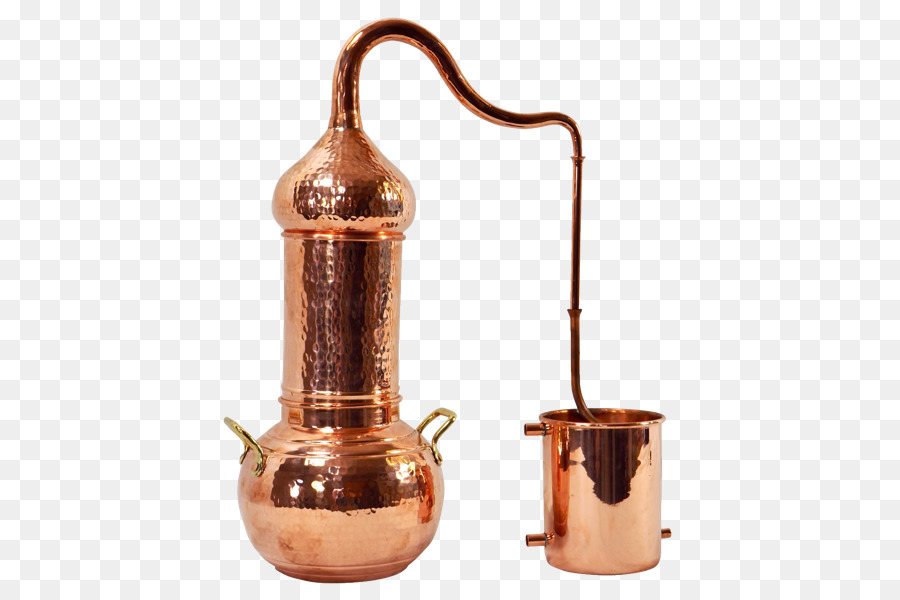
Katie and David both said, “What?”
“He is
a chemist,
but from the tools he’s working with, it appears
he is an alchemist. Do you
remember,
Katie, I always said, to find the answer you must
always look at the context
first? See here?”
The professor pointed to two vessels in the
painting
connected by a tube. “That’s an alembic, which was
used to try to turn chemicals
into gold. This
first vessel is called a
cucurbit in
which the chemical is
boiled to create vapor that goes up into the tube
and into the other vessel.”
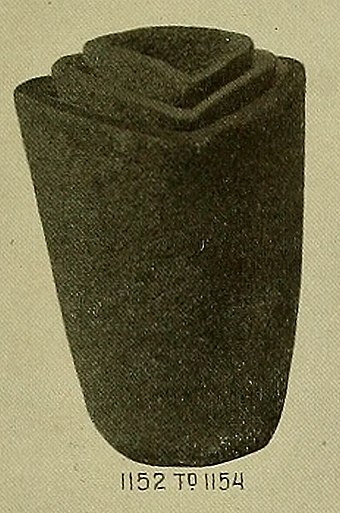 David
remembered working with something like that in
high
school chemistry class and also in illustrations
of how whiskey is made.
David
remembered working with something like that in
high
school chemistry class and also in illustrations
of how whiskey is made.
“Now, this,” continued Prof. Mundt, “is
called a Hessian
crucible (left), made of clay, which was
invented in the Hesse region of Germany in
the late Middle Ages. It can heat up to very high
temperatures, which you need
in metallurgy.”
David asked, somewhat sheepishly, “Did any
of these
alchemists ever actually succeed in turning
another metal into gold?”
“No, but it was not for lack of trying by
the most
intelligent scientists and minds of the age,
especially in the 17th century,
which corresponds to Vermeer’s time.
Alchemy goes much further back in history,
of course, to Egypt and
India, but a brilliant British scientist named
John Dee was most influential in
the 17th century for his work on alchemy, which he
published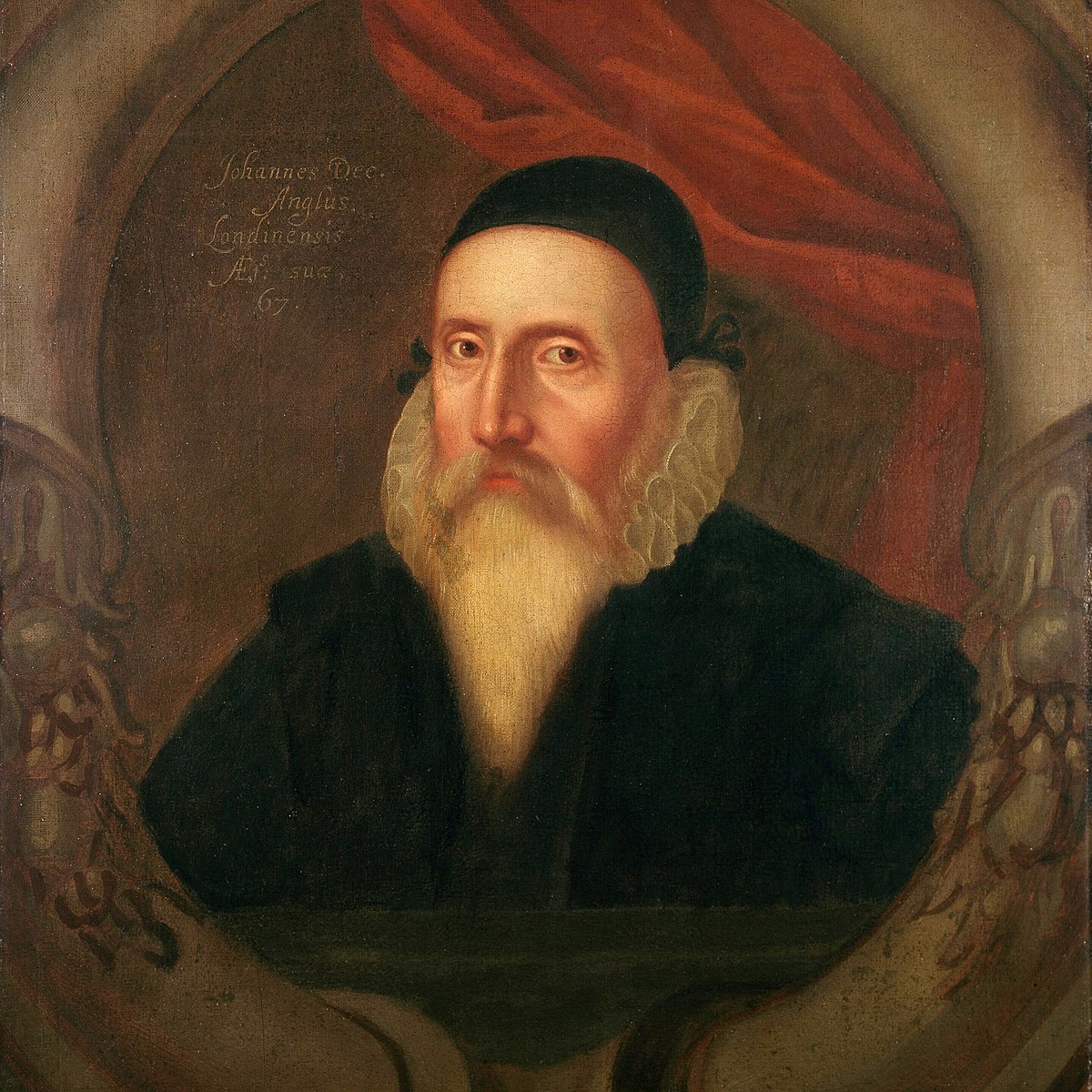 in
1564 as Monas
Hieroglyphica.”
in
1564 as Monas
Hieroglyphica.”
“And he came close to making it work?”
asked David.
“Not that we know of. You see, in addition
to being a
brilliant scientist and thinker, Dee was also a
little, no, very
eccentric. He thought by practicing
alchemy he could somehow communicate with the
angels. I doubt he got very far
with that proposition, but his work was very, very
well known in Europe. I’m
sure you’ve all heard of the ‘philosopher’s
stone.’ That
was a much sought-after hypothetical
metal that was said to be the key to turn all base
metals into gold.”
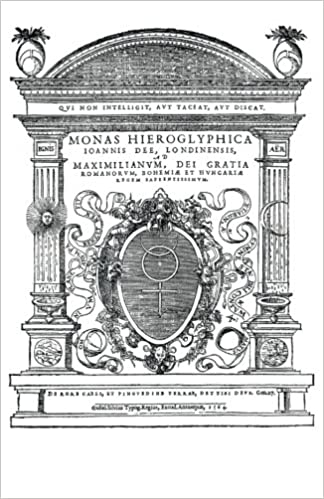 Prof. Mundt looked
back at the photo and said, “Yes, it
would make sense in Vermeer’s time that if this
painting is the third in a
series, he was aligning the three sciences of his
time thought to be the most
critical to understanding the entire
universe—Astronomy, Geography and Alchemy.
Astronomy symbolizes the ether, which is
the universe, Geography the Earth and water, and
Alchemy symbolizes fire.
That’s three of the four classical elements.”
Prof. Mundt looked
back at the photo and said, “Yes, it
would make sense in Vermeer’s time that if this
painting is the third in a
series, he was aligning the three sciences of his
time thought to be the most
critical to understanding the entire
universe—Astronomy, Geography and Alchemy.
Astronomy symbolizes the ether, which is
the universe, Geography the Earth and water, and
Alchemy symbolizes fire.
That’s three of the four classical elements.”
“What’s the fourth?” asked David, thinking
of the Chicago
rock band Earth, Wind & Fire.
“Air or wind. Perhaps there was supposed to
be a fourth
painting, of another scientist, possibly a
meteorologist.
You know, Galileo, Kepler and Pascal were
all
working on heat and cold and atmospheric pressures
in the 17th century.”
Katie was shaking her head and said, “That
is so
fascinating. To think Vermeer might
have intended to do four paintings about the four
classic elements at a time
when modern science was just really beginning.”
David chimed in, asking, “So, then, it
makes sense that this
new Vermeer is from that series and is probably
authentic?”
Prof. Mundt merely turned to Prof. Horner,
who reiterated,
“Without the actual painting to look at, I can’t
say anything meaningful about
the authenticity.
But I must say I’m
very intrigued.”
“I imagine hiring an artist like Vermeer to
make four
paintings would have been very expensive?” asked
David.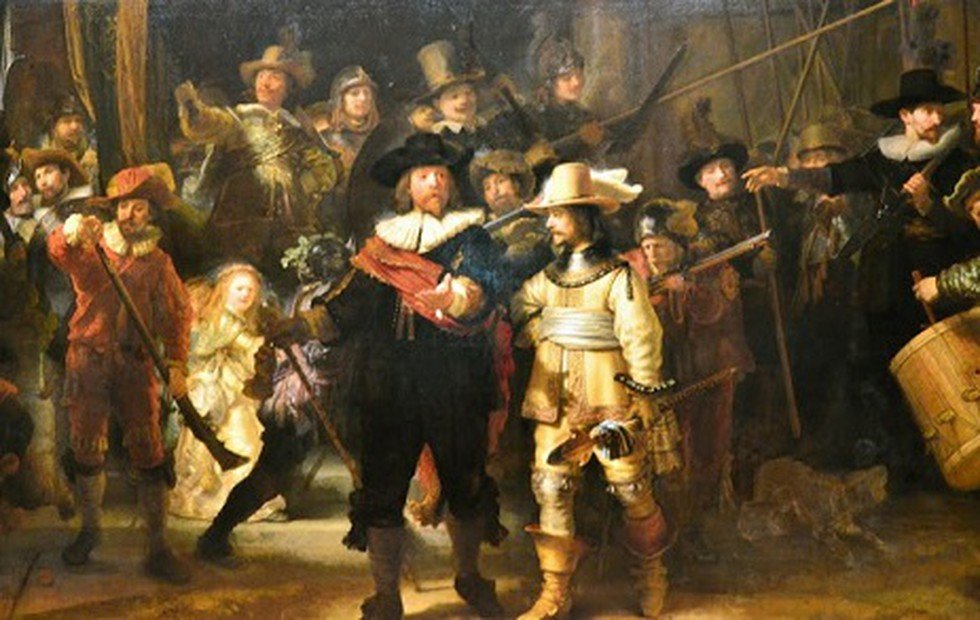
Prof. Horner shook her head and said, “Not
necessarily. You
see, before the 17th century most artists had to
depend on the aristocracy and
the papacy for their commissions, but that started
to change in northern
Europe—and especially in the Netherlands—with the
growth of a wealthy merchant
class.”
“Indeed,” said Prof. Mundt, “the Dutch
became the masters at
forming syndicates to share expenses for building
ships or canals, or hiring a
famous painter.”
“That’s right,” said Katie, “I remember
that Rembrandt’s
famous painting The Night
Watch (right)—it’s
huge and has dozens of figures in it—was
commissioned by a local militia in
Amsterdam.”
“Exactly,” said Prof. Horner, who was
looking at the photo
through a magnifying glass, “and that picture was
painted just a few years
before Vermeer painted his scientists. But these
were much smaller canvases
than The
Night Watch, and Vermeer was
not considered to be in Rembrandt’s league. So
whoever commissioned them
probably didn’t pay a fortune for them.”
She looked closer, then focused in on what
seemed to be some
writing on the desk next to the globe, just as
there was writing in the other
two paintings.
In The Astronomer “Meer
MDCLXVIII”—“[Ver]meer 1668”— was
written on the wall and what
looked like “cer” on the cabinet; in The
Geographer “I. Ver-meer
MDCLXVIII”—“[Jan] Vermeer 1668”—was written on the
cabinet. Prof.
Horner said, “I can barely make it out
in this photo, but it seems to read ‘Sui
Ien. MDCLXVIII.’”
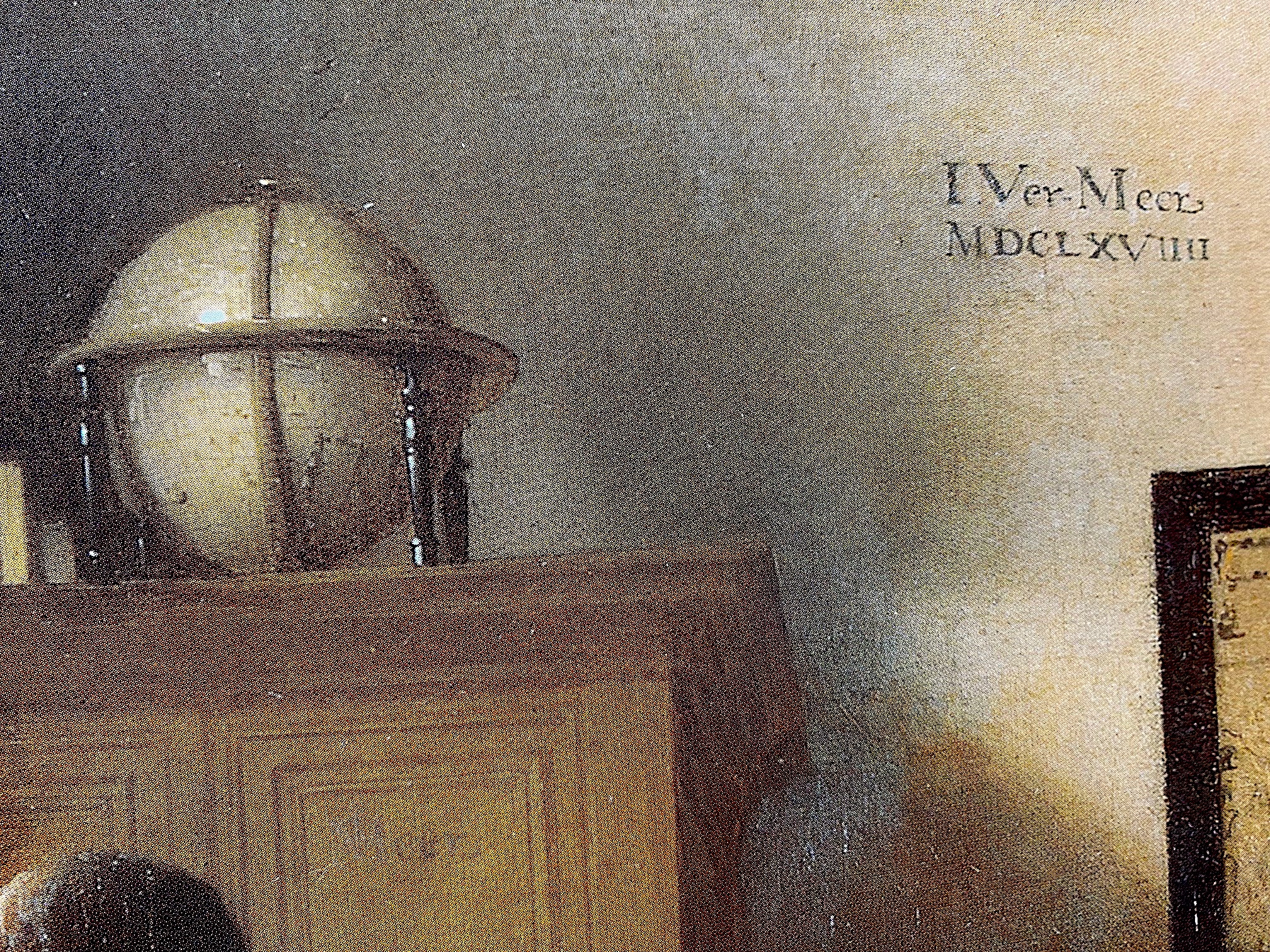 “What does that mean?” asked David.
“What does that mean?” asked David.
Prof. Mundt was smiling. “I believe it
means ‘sui
generis,’ which is Latin for
something in a class of its own, something unique. As gold
made from another metal through
alchemy would be.”
“And why is generis
spelled ‘Ien’
rather than ‘Gen,’”
asked David, who was not grasping
everything the scholars were saying.
“Back then the Roman letter ‘I’ was used for a ‘J’,
just as Vermeer spelled his own first name ‘Jan’
with an ‘I’ in The
Geographer painting,” said Prof.
Horner, pointing to the signature.
“But generis
is
spelled with a ‘g’” said
Katie.
Prof. Mundt rubbed his chin and said,
“Perhaps Vermeer did
not know much Latin. You see, he even spelled his
own named differently twice.”
By now everyone
around the table was smiling. Except
Helen Liu.
© John Mariani, 2016
❖❖❖
PASSOVER WINES
By Geoff Kalish

Just
in time for Passover many shops across the country
have stocked-up on Kosher-for-Passover wines. And,
based on a number of tastings during the past few
months, the following is a listing of, and
comments on, my top ten choices and fare to match
with them. Of note, all recommendations are
sensibly priced and none are the jammy-sweet
quaffs of yesteryear.
WHITES
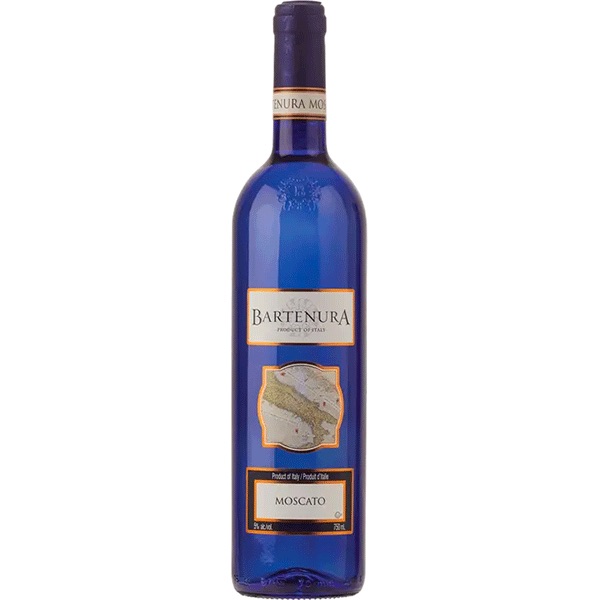
While
reds are more traditional for Passover, the
following two whites make excellent wines to serve
with traditional appetizers like gefilte fish
(poached fish dumplings, usually made from a mix of
ground carp, pike and/or whitefish and classically
served with fresh horseradish), deviled eggs and
even chopped liver.
Bartenura
Moscato d’Asti
2021 ($13)—While
not to everyone’s liking, this very low alcohol
(5%), fragrant, slightly effervescent wine in a
distinctive blue bottle hails from Italy. It shows a
bouquet dominated by honeysuckle and sweet taste of
ripe pears and peaches and can also serve as
accompaniment for dessert items like flourless
chocolate cake or macaroons.
Goose
Bay Sauvignon Blanc
2021 ($21)—Hailing
from New Zealand, this crisp, robust wine has a
bouquet and taste of ripe grapefruit and lychees,
with a hint of melon in its finish. It’s a winner
particularly with
hors d’ouevres like lox or olive tapenade on
matozah crackers.
REDS
Alavida 2021 ($19)—This
100% organic Malbec comes from the Bousquet family
winery in western Argentina’s Uco Valley area. For
this wine grapes were grown in gravelly, sandy soil,
hand-harvested and fermented in stainless steel
tanks. It shows a bouquet and taste of plums and
cherries, with some tannin and a touch of pepper in
its finish, which smooths upon some aeration. It
mates well with appetizers like chopped liver on
matozah crackers as well as main course items
ranging from poached salmon to roasted duck to
sliced steak.
Route
Victor Cabernet Sauvignon
2018 ($15)—Produced
from 100% Cabernet Sauvignon grapes harvested in
Lodi California, this wine shows a bouquet and taste
of cherries and cassis with notes of cloves and
cinnamon in its slightly tannic finish. It’s best
opened and decanted about an hour before serving and
mates well with braised brisket of beef and short
ribs.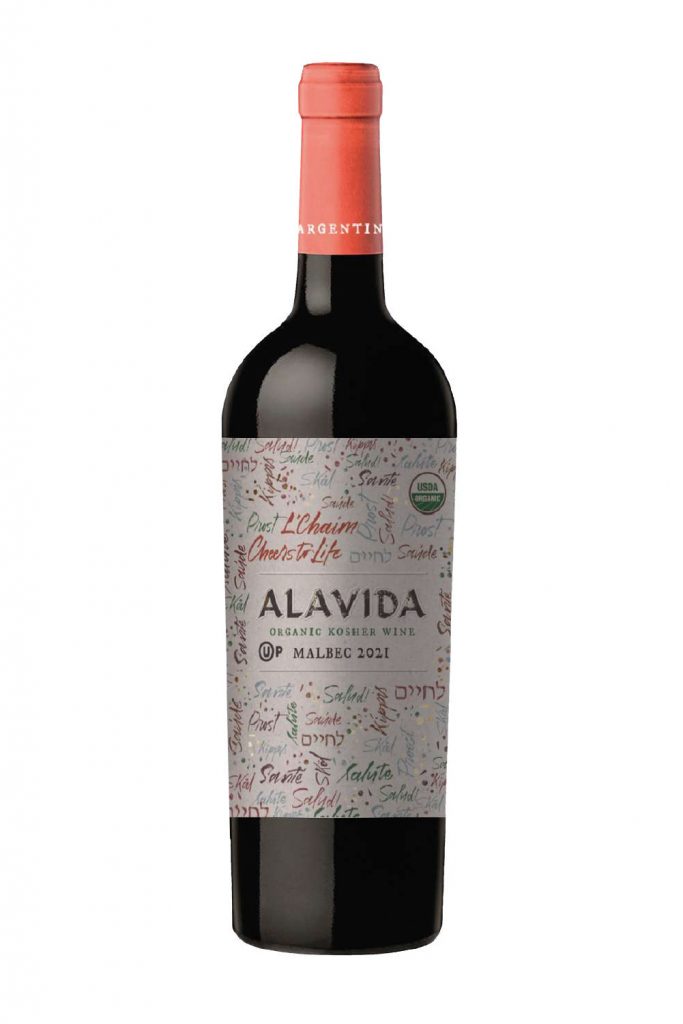
Cantina
Guilliano Chianti 2019 ($10)—Fashioned
from
a blend of Sangiovese, Merlot and Ciliegolo grapes
grown around Italy’s tiny western Tuscany town of
Cascina Alta, this bargain bottle boasts a bouquet
and taste of raspberries and ripe cherries, with a
touch of licorice in its finish. It mates
particularly well with traditional main course items
like roasted chicken, potato kugel and lamb chops.
Chateau
Camplay
2018 ($18)—A
blend of Merlot (75%), Cabernet Sauvignon (20%) and
Petit Verdot (5%) aged for 8 months in oak was used
to make this wine from Bordeaux, France. It shows a
bouquet and taste of ripe plums and cassis with
notes of fresh herbs in its finish and makes
excellent accompaniment for most main course
Passover items, particularly lamb dishes.
Alfasi
Cabernet Sauvignon
2018 ($10)—Named
for an 11th century Talmudic scholar, Alfasi, this
wine was made at Carta Vieja winery (Chile’s first
producer of kosher wine) from organic grapes grown
in the country’s Central Valley. It has a bouquet
and taste of ripe blueberries, plums and cassis with
a smooth, memorable finish. Match it with veal
dishes like broiled chops, cutlets, stews or osso
buco.
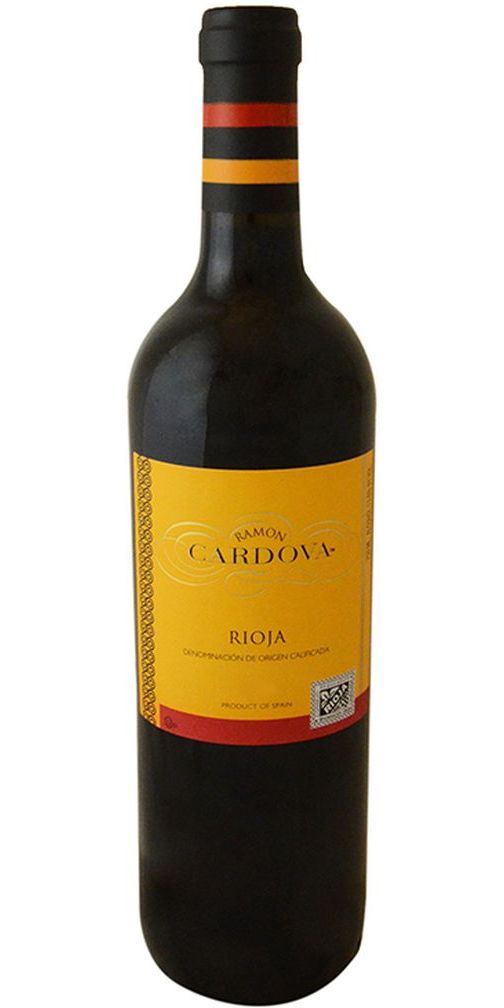
Nv
Cantine Leuci di Guagnano Negroamaro ($13)—This 100% Negromaro wine hails from
vineyards with 20- to 30- year-old vines grown in
Italy’s “heel of the boot” region of Puglia. It has
a bouquet and rustic taste of ripe plums and cassis
that require a bit of aeration following opening. It
makes an excellent mate for sweet and sour stuffed
cabbage, braised leg of lamb or sliced steak.
Barkan
Classic Cabernet Sauvignon
2019 ($10)—Made
by one of Israel’s largest producers from grapes
grown in Galilee and the Golan Heights, this wine
shows a bouquet and taste of black currants and
plums, with notes of oak. Mate it with main-course
items such as short ribs or leg of lamb and roasted
rosemary potatoes.
Ramon
Cardova Rioja
2018 ($18)—This
full-bodied wine was produced from 100% Tempranillo
grapes grown in vineyards surrounding the town of
Har, in north-central Spain. Its taste of ripe wild
berries and touch of balsamic in its finish mates
perfectly with braised short ribs of beef or pot
roasts.
❖❖❖
Any of John Mariani's books below may be ordered from amazon.com.
 The Hound in Heaven
(21st Century Lion Books) is a novella, and
for anyone who loves dogs, Christmas, romance,
inspiration, even the supernatural, I hope you'll find
this to be a treasured favorite. The story
concerns how, after a New England teacher, his wife and
their two daughters adopt a stray puppy found in their
barn in northern Maine, their lives seem full of promise.
But when tragedy strikes, their wonderful dog Lazarus and
the spirit of Christmas are the only things that may bring
his master back from the edge of despair.
The Hound in Heaven
(21st Century Lion Books) is a novella, and
for anyone who loves dogs, Christmas, romance,
inspiration, even the supernatural, I hope you'll find
this to be a treasured favorite. The story
concerns how, after a New England teacher, his wife and
their two daughters adopt a stray puppy found in their
barn in northern Maine, their lives seem full of promise.
But when tragedy strikes, their wonderful dog Lazarus and
the spirit of Christmas are the only things that may bring
his master back from the edge of despair. WATCH THE VIDEO!
“What a huge surprise turn this story took! I was completely stunned! I truly enjoyed this book and its message.” – Actress Ali MacGraw
“He had me at Page One. The amount of heart, human insight, soul searching, and deft literary strength that John Mariani pours into this airtight novella is vertigo-inducing. Perhaps ‘wow’ would be the best comment.” – James Dalessandro, author of Bohemian Heart and 1906.
“John Mariani’s Hound in Heaven starts with a well-painted portrayal of an American family, along with the requisite dog. A surprise event flips the action of the novel and captures us for a voyage leading to a hopeful and heart-warming message. A page turning, one sitting read, it’s the perfect antidote for the winter and promotion of holiday celebration.” – Ann Pearlman, author of The Christmas Cookie Club and A Gift for my Sister.
“John Mariani’s concise, achingly beautiful novella pulls a literary rabbit out of a hat – a mash-up of the cosmic and the intimate, the tragic and the heart-warming – a Christmas tale for all ages, and all faiths. Read it to your children, read it to yourself… but read it. Early and often. Highly recommended.” – Jay Bonansinga, New York Times bestselling author of Pinkerton’s War, The Sinking of The Eastland, and The Walking Dead: The Road To Woodbury.
“Amazing things happen when you open your heart to an animal. The Hound in Heaven delivers a powerful story of healing that is forged in the spiritual relationship between a man and his best friend. The book brings a message of hope that can enrich our images of family, love, and loss.” – Dr. Barbara Royal, author of The Royal Treatment.
 |
The Encyclopedia of American Food and Drink by John F. Mariani (Bloomsbury USA, $35) Modesty forbids me to praise my own new book, but let me proudly say that it is an extensive revision of the 4th edition that appeared more than a decade ago, before locavores, molecular cuisine, modernist cuisine, the Food Network and so much more, now included. Word origins have been completely updated, as have per capita consumption and production stats. Most important, for the first time since publication in the 1980s, the book includes more than 100 biographies of Americans who have changed the way we cook, eat and drink -- from Fannie Farmer and Julia Child to Robert Mondavi and Thomas Keller. "This book is amazing! It has entries for everything from `abalone' to `zwieback,' plus more than 500 recipes for classic American dishes and drinks."--Devra First, The Boston Globe. "Much needed in any kitchen library."--Bon Appetit. |
"Eating Italian will never be the same after reading John Mariani's entertaining and savory gastronomical history of the cuisine of Italy and how it won over appetites worldwide. . . . This book is such a tasteful narrative that it will literally make you hungry for Italian food and arouse your appetite for gastronomical history."--Don Oldenburg, USA Today. "Italian
restaurants--some good, some glitzy--far
outnumber their French rivals. Many of
these establishments are zestfully described
in How Italian Food Conquered the World, an
entertaining and fact-filled chronicle by
food-and-wine correspondent John F.
Mariani."--Aram Bakshian Jr., Wall Street
Journal.
"Equal parts
history, sociology, gastronomy, and just
plain fun, How Italian Food Conquered the
World tells the captivating and delicious
story of the (let's face it) everybody's
favorite cuisine with clarity, verve and
more than one surprise."--Colman Andrews,
editorial director of The Daily
Meal.com. "A fantastic and fascinating
read, covering everything from the influence
of Venice's spice trade to the impact of
Italian immigrants in America and the
evolution of alta cucina. This book will
serve as a terrific resource to anyone
interested in the real story of Italian
food."--Mary Ann Esposito, host of PBS-TV's
Ciao
Italia. "John Mariani has written the
definitive history of how Italians won their
way into our hearts, minds, and
stomachs. It's a story of pleasure over
pomp and taste over technique."--Danny Meyer,
owner of NYC restaurants Union Square
Cafe, The Modern, and Maialino.
|
 |
 |
 |
 |
 |
 |
 Everett Potter's Travel Report:
Everett Potter's Travel Report: 
 Eating Las
Vegas JOHN CURTAS has been covering
the Las Vegas food and restaurant scene
since 1995. He is the co-author of EATING LAS
VEGAS – The 50 Essential Restaurants (as
well as the author of the Eating Las
Vegas web site: www.eatinglasvegas.
He can also be seen every Friday morning as
the “resident foodie” for Wake Up With the
Wagners on KSNV TV (NBC) Channel 3 in
Las Vegas.
Eating Las
Vegas JOHN CURTAS has been covering
the Las Vegas food and restaurant scene
since 1995. He is the co-author of EATING LAS
VEGAS – The 50 Essential Restaurants (as
well as the author of the Eating Las
Vegas web site: www.eatinglasvegas.
He can also be seen every Friday morning as
the “resident foodie” for Wake Up With the
Wagners on KSNV TV (NBC) Channel 3 in
Las Vegas.
MARIANI'S VIRTUAL GOURMET
NEWSLETTER is published weekly. Publisher: John Mariani. Editor: Walter Bagley. Contributing Writers: Christopher
Mariani, Misha Mariani, John A. Curtas, Gerry Dawes, Geoff Kalish.
Contributing
Photographer: Galina Dargery. Technical
Advisor: Gerry
McLoughlin.
If you wish to subscribe to this
newsletter, please click here: http://www.johnmariani.com/subscribe/index.html
© copyright John Mariani 2022
